Etheldred Benett specimens
Etheldred Benett (22 July 1776 – 11 January 1845) was one of England early geologists, and considered the “first lady geologist”, who worked closely with Gideon Mantell, George Bellas Greenough, William Buckland and Samuel Woodward.
Her extensive collection amassed over her life time, was purchased by physician Thomas Wilson, who donated it to the Academy of Natural Sciences of Philadelphia, USA, where it resides to date.
In 1845, a modest sub-collection of hers did not make the transatlantic journey and resides in Leeds Museums and Galleries. Trying to decipher her specimens from the 1,000’s in the collection is an undertaking, but cross referencing literature and handwriting was lead to 3 being identified, with others just waiting to reveal their true historic past.
As a final Geoblitz treat, i can say these are part of Leeds Museum’s Etheldred Benett collection.

Polypothecia quinqueloba, sponge from Warminster, UK.
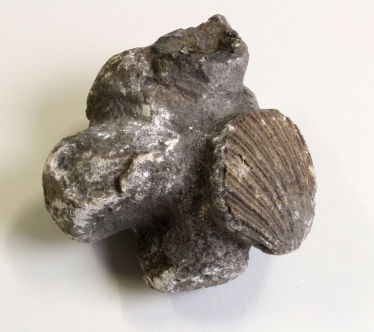
Polypothecia sp., sponge with bivalve, location unknown.
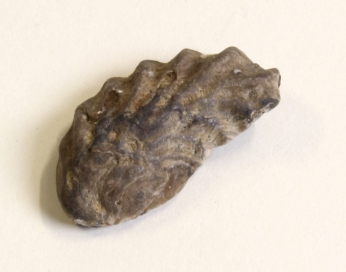
Myoconcha portlandica, bivalve from Dorset, UK.
As Geoblitz comes to a close, I would like to thank everyone involved and everyone around the World who has visited this blog.
Armley Hippo & Friends animation
Click Here to view the animation.
The winners of the “Armley Hippo & Friends” drawing and story open competition are:
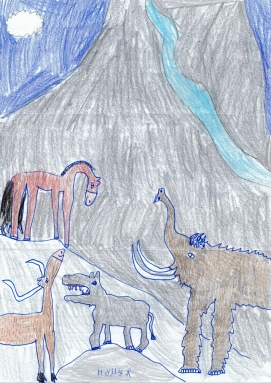
Drawing by Holly Reeve
Story “Stuck in the mud” by Lochan Chakrabarti
The winning story and drawing are currently being turned into a 5 minute cartoon, and will be show during “Hippo week”, along with all the entries, at Leeds Museum; 4th – 9th April 2017. There were so many wonderful creations, so a big thank you to everyone that entered.
The Pleistocene mammal Review
How the review works
The aim of the review is to establish material that is of scientific merit and specimens which are good representatives, possessing public potential for display and community events. These two criteria do not necessarily go hand in hand; as a specimen may have a fantastic scientific research potential, but may not be visually impressive. Therefore the specimens are graded against two separate criteria: Scientific Merit (as a numerical value of stars) and Public Engagement (as a Gold, Silver or Bronze status).
For a more in depth look into the review criteria, click on the “Review Criteria” tab in the tool bar above.
The Pleistocene mammal collection consists of 110 trays containing 866 specimens from numerous Historic UK sites, predominantly from the local region of North Yorkshire, Derbyshire and Devon, with a few additional localities. The bulk of the collection is nearly all Pleistocene (2.5Ma – 11,700 years ago) with some minor Holocene (under 11,700 years ago) material, and stored in the archives at the Discovery Centre; with some specimens on display at Leeds City Museum. The localities provide research potential and some scientific merit, but the specimens themselves are very limited for public engagement. Full articulated skeletons and skulls are items of popularity, but these are occasional within the collection. For a detailed overview, please read Danielle’s summary that the end of this review.
The review was conducted as a broad overview of all the historic sites, focussing on individual specimens of note; followed by a systematic, tray by tray investigation of miscellaneous material.
Danielle Schreve led the review over three days with the results occurring as an overview of historic sites with some of the highlights.
The Gold specimens (articulated skeletons)
A wonderful, complete and fully articulated Megaloceros giganteus (3 Gold stars – Leedm.C.1847.11.8) a Giant deer found in County Limerick, Ireland. Specimens are common and widespread across Europe, although often incomplete or a hybrid of two or more individuals. Specimen is on display in Leeds Museum.
A magnificent Pleistocene Hippopotamus amphibius (3 Gold stars – Leedm.B.1852.05.001-122) approx. 126,000 years ago. Found in Wortley, Leeds, West Yorkshire in 1852, during commercial clay excavations for a local brickworks. Unfortunately there were no accurate records of the specific horizons in which the bones were discovered, and only complete bones were retained, with any fragmentary remains being disregarded. The all the specimens were identified at the time by Henry Denny (the curator of then Leeds Philosophical & Literary Society’s Museum) and consisted of: 2 adult and 1 juvenile Hippopotamuses, Mammoth, and Auroch bones, with additional documentation suggesting a Horse and Bear material. The Bear may have been a miss identification of the Auroch jaw, but these two are very different and are unlikely to be mistaken for each other, given the identification at the time were entirely correct.
A minimal articulated specimen on display at Leeds Museum, (pictured above) and features 25 of the 122 bones, with the bulk of the material in archived in storage (pictured right). The hippo specimen was reviewed as an entity, but for the museum records the individual bones were recorded in the table below. This table does not feature in the overall summary at the end of this post, and is simply recorded as one of the 3 Gold stars.
The Silver specimens
A truly wonderful skull specimen of a Ursus spelaeus (2 Silver stars – Leedm.B.TN6054) from the Historic site of, Les Grottes des Échelles, Auvergne, France. Additional material that accompanies this cave bear skull are: two separate jaws from different bears, a limb bones, vertebra and ribs; which once may have been articulated in near complete/complete skeleton.
An impressive Holocene skull of a Ursus arctos (1 Silver star – Leedm.B.1864.37.2), smaller than average for a Brown Bear, and unfortunately missing its teeth, from County Longford, Ireland.
A historically interesting and unusual skull of a Ursus arctos (1 Silver star – Leedm.B.1864.38.1) which exhibits an uncharacteristic elongated and flattered snout for a Brown Bear, from County Westmeath, Ireland. From the Holocene, this specimen was originally identified as a new species of bear and deemed the holotype, but a cast was made of the previous specimen above (Leedm.B.1864.37.2) by mistake and sent to the NHM, London in a case of misidentification and a mix up of accession numbers.
An unusual partial skeleton of a Equus sp. (1 Silver star – Leedm.B.TN6674), a horse with severe skeletal disease, spinal fusing and arthritis. Additional material that accompanies this specimen are: skull with articulated jaw, various limb bones, vertebrae, sacrum and ribs. Unfortunately there is little documentation that accompanies this skeleton, with no location or pathological history.
The Bronze & Clear specimens from historic sites.
Kent’s Cavern
The Kent’s Cavern material features 172 accessioned entries, with multiple specimens covered by a single accession number, with the bulk of the material being fragmentary bones gnawed by hyenas. The collection contains: Hyena, Woolly Rhino, Hare, Brown bear, Bison, Horse, Fox, Badger, Reindeer and bird. This historic site is one of the best Pleistocene hyena den assemblages in the UK, with material distributed worldwide.
A very good specimen of Crocuta spelaea (3 Bronze stars – Leedm.B.1882.06.CG.2), a spotted hyena’s left lower jaw with molar teeth; from Smerdon’s Passage, Kent’s Cavern, Devon, England.
A good specimen of Ursus sp. (3 Bronze stars – Leedm.B.1882.06.U) bear incisor tooth, with repaired damage; from North Sally port, Kent’s Cavern, Devon, England.
A rarer specimen of Strongyloceros spelaeus (3 Bronze stars – Leedm.B.1882.06.BZ), left upper molar tooth from a giant red deer; from Smerdon’s Passage, Kent’s Cavern, Devon, England.
A selection of Coelodonta antiquitatis (3 Bronze stars – Leedm.B.TN6300), a upper and lower molar teeth from a woolly rhino; from Kent’s Cavern, Devon, England.
A semi-rare specimen of an unidentified Aves (3 Clear stars – Leedm.B.1882.06.C.2), a distinct birds carpometacarpus wing bone; from South Sally port, Kent’s Cavern, Devon, England.
Windy Knoll
The Windy Knoll material features 61 specimens, consisting of complete bones or large sections of bone. The collection contains: Auroch, Brown bear, Bison and Reindeer. The historic site has some of the best preservation of Pleistocene material in the UK, with material in only a few museums.
A very good specimen of Bison priscus (3 Bronze stars – Leedm.B.2014.05.725), a well preserved humerus limb bone; from Windy Knoll, Derbyshire, England.
A good specimen of Rangifer tarandus (2 Clear stars – Leedm.B.TN6564), partial and back half of a reindeers skull with antler pedicles or mounts; from Windy Knoll, Derbyshire, England.
Wookey hole
The Wookey hole material features 43 specimens, consisting of teeth and fragmentary bones gnawed by hyenas. The collection contains: Woolly rhino and Red deer from this historic and famous series of caves.
A good specimen of Coelodonta antiquitatis (3 Bronze stars – Leedm.B.1863.64.1AJ), a woolly rhino tooth, right upper first molar; from Wookey hole, Somerset, England.
Raygill fissure
The Raygill fissure material features 48 specimens, consisting of teeth and occasional bone fragments. The collection contains: Hyena, Narrow nosed rhino, Bison, Hippo and Straight tusked Elephant. The historic site has poorly preserved specimens, with material distributed in only a few museums and private collections.
A poorly preserved tooth specimen of Stephanorhinus hemitoechus (3 Bronze stars – Leedm.B.TN6412), a narrow nosed rhino, right lower second molar; from Raygill fissure, North Yorkshire, England.
Brixham Cave
The Brixham Cave material features 27 specimens, consisting hyena jaws and fragmentary horse long bones gnawed by hyenas. The collection contains: Hyena and Horse. The historic site has well-preserved specimens, with material in a number of museums.
An interesting specimen of Crocuta spelaea (2 Clear star – Leedm.B.1869.07.03), three spotted hyenas lower jaw with molar teeth; from Brixham cave, Devon, England.
Kirkdale Cave
The Kirkdale Cave material features 19 specimens, consisting of teeth and fragmentary bones. The collection contains: Hyena, Fox, Wolf, Bison and Water vole. The historic site has well-preserved specimens, with material in a few museums.
A scientifically important specimen of Arvicola terrestis (3 Clear star – Leedm.B.1868.08.B), three water vole jaws with molar teeth, with unattached incisors; from Kirkdale cave, Cumbria, England.
Carlisle
The Carlisle peat bog material features 8 Holocene specimens. The collection contains an Auroch, from an unknown site of merit, featuring well-preserved specimens with unknown distribution.
Two well-preserved ribs of Bos primigenius (2 Bronze stars – Leedm.B.TN6512), the right rib exhibits a healing fracture, from Carlisle, Cumbria, England. Additional material that accompanies this specimen are: additional ribs (Leedm.B.TN6511), scapula, metatarsal, limb bones and jaw.
Additional specimens of note and merit:
A wonderful specimen of Mammuthus sp. (2 Bronze stars – Leedm.B.TN3132), a juvenile mammoth jaw with premolar teeth; from the Forest Bed, Mundesley, Norfolk, England.
A beautifully preserved specimen of Felis silvestris (1 Bronze star – Leedm.B.TN6070), a wild cat jaw with canine and molar teeth; from Kirkhead cave, Cumbria, England.
A wonderful and curious specimen of Glyptodon reticulatus (1 Bronze star – Leedm.B.1868.69.7), a section of carapace or shell from a distinct and incredible animal; from Buenos Ayres, Argentina.
A good specimen of Palaeoloxodon antiquus (0 Bronze stars – Leedm.B.TN899), a straight tusked elephant tooth, left lower first molar with root; from an unknown location.
An interesting specimen of Mammuthus primigenius (0 Bronze stars – Leedm.B.TN4778), a cut cross-section of woolly mammoth tooth, lower first molar; from an unknown location.
Other sites of interest that are not featured are:
Dowker Bottom Cave
The Dowker Bottom Cave material, consisting of 42 Holocene specimens, mixed with Neolithic domesticated animals. The collection contains: Wolf, Badger, Roe deer and Red deer; and domesticated: Cattle, Sheep and Horse. A historic site situated in North Yorkshire, England; features well-preserved specimens, with material in a few museums.
Oreston Cave
The Oreston Cave material features 28 specimens, mostly consisting of teeth and occasional bone fragments. A rare collection containing: Hyena, Horse, Boar, Bison, Red deer, Roe deer and Sheep. A historic site situated in Plymouth, Devon, England; features well-preserved specimens, with material in only a very few museums.
Sundwig Cave
The Sundwig Cave material features 15 specimens, as partial or complete bones. The collection contains: Giant deer, Woolly rhino, Reindeer, Hare, Mammoth, Fox and Auroch. A historic site situated in Westphalia, Germany; features well-preserved specimens, with limited distribution in the UK.
Victoria cave
The Victoria cave material features 11 specimens, mostly consisting of teeth and occasional bone fragments. The collection contains: Hyena, Bison, Horse, Roe deer and Sheep. A historic site situated in North Yorkshire, England; features well-preserved specimens, with material in a number of museums.
The review covered 804 specimens, establishing the following summary.
Gold = A truly amazing specimen; Silver = A very good specimen that has great potential; Bronze = A good specimen which can demonstrate a particular feature; Clear = A specimen that has limited visual qualities.
3 stars = High scientific importance; 2 stars = Moderate scientific importance; 1 star = Fair scientific importance; 0 stars = Supported by limited or no documentation.
Danielle’s summary of the Pleistocene mammal collection.
The Leeds Museum collection of Pleistocene vertebrates is characterized by predominantly British mammalian material of Late Pleistocene and Holocene age (126,000 years to present). A small amount of material is of early Middle Pleistocene age, from the “Forest Bed” deposits around Cromer, although further provenance information would be needed to refine the age (between 780,000 and 450,000 years old). Further small collections have come from caves in France and Germany. The fossils are identified correctly in the vast majority of cases (where checks were made against the electronic databases or specimen labels) but a major issue for a substantial proportion of the material is the lack of provenance, likely an artifact of the historical damage to the collection during the Second World War. This acts to reduce the overall scientific significance of specimens without a known locality, although it does not impinge on their potential importance as outreach specimens. A few fish and very rare bird remains were also noted.
The collection contains three assemblages of international significance in terms of their scientific importance and link to historical collections or notable antiquarians. The material described below is suitable for diverse morphometrical studies, stable isotopic and elemental analyses to reconstruct trophic level or environmental parameters, relatively new palaeodietary techniques such as dental microwear (where teeth are well preserved) and, in the case of material younger than 50,000 years old, potentially for radiocarbon dating and molecular analysis. These are:
- The Last (Ipswichian) Interglacial assemblage from Wortley, Leeds (“the Armley Hippo”). Despite the reported finding of the remains of four hippopotamuses in 1852 (and subsequently – see footnote in Denny, 1852) in deposits of the River Aire at the Longley’s brickfield in Wortley, the brief examination of the collection undertaken here suggests remains of a minimum number of two individuals are present, based on body part and side representation. A more detailed morphometrical study, including closer inspection of the teeth, would be required to confirm this definitively. The remains comprise mostly those of a single, large adult individual, parts of which are on public display. The major postcranial elements are mostly intact and although dental material is present (although incomplete), the crania were seemingly very fragmented. Although hippopotamuses are well known and widespread from Last Interglacial deposits in Britain, the Wortley example is an extremely important find, since discoveries of articulated large mammal fossils are very rare. Only the site of Barrington (Cambridgeshire) approaches such a degree of completeness in terms of hippopotamus remains in Britain but the skeleton on display from that site in the Sedgwick Museum of Geology in Cambridge is a composite, whereas the Wortley material is (at least) a single individual. The Wortley material is stained black and is generally very well preserved, although some specimens are suffering because of old conservation procedures. The completeness of the material (apparently lacking any evidence of weathering, abrasion or carnivore modification) suggests that the animals may have perished due to flooding and that the carcasses were buried very quickly after death. The assemblage also includes remains of mammoth (Mammuthus primigenius), of younger age than the hippopotamus, and aurochs (Bos primigenius), which is likely contemporary.
The hippopotamus remains date to the Last Interglacial, c. 126,000 years ago, correlated with Marine Oxygen Isotope Stage (MIS) 5e. Currant and Jacobi (2011) assigned mammalian faunas from this period to the Joint Mitnor Cave Mammal Assemblage-Zone. This interglacial was characterized by warmer summer temperatures than present (around 5 degrees C warmer) and mild winters above freezing, as attested to by the hippopotamuses themselves, which cannot tolerate seasonally-frozen water bodies. Although restricted to sub-Saharan Africa today, hippos were much more widespread in southern Europe in the past, although their presence in Britain during the last 450,000 years is restricted to the Last Interglacial. They are therefore an important biostratigraphical or “marker fossil” for this interglacial. The published reports from Wortley mention plant remains from the clays but no further details are provided. It would be extremely interesting to know if equivalent deposits from this river terrace existed in the area today, which could be the source of new investigations. Evidence from other Last Interglacial sites in Britain suggests the development of mixed oak woodland at this time, although megafauna such as hippopotamus exerted a strong effect on the local vegetation, especially in bankside habitats, where they heavily grazed the surrounding area. The Wortley hippo individual(s) are of scientific significance to any researcher interested in Pleistocene megafauna. They are iconic finds for the city of Leeds and of supreme public interest. Very much more should be made of their discovery and significance in the main museum gallery.
- The Last (Ipswichian, MIS 5e) Interglacial assemblage from Raygill Fissure, Lothersdale, near Skipton. This assemblage has never been published in detail and is much less well known that other sites such as Victoria Cave and Kirkdale Cave (both North Yorkshire) but is nonetheless significant as a good example of a Last Interglacial mammal assemblage. The assemblage dates back to the late 19th Century and an excellent review of its discovery and context is provided by O’Connor and Lord (2013). The assemblage at Leeds Museum is dominated by teeth (most of which are battered), attesting to a strong degree of collector and/or preservational bias. It contains Palaeoloxodon antiquus (straight-tusked elephant), hippopotamus (Hippopotamus amphibius), narrow-nosed rhinoceros (Stephanorhinus hemitoechus), bison (Bison priscus) and spotted hyaena (Crocuta crocuta). The palaeoenvironmental and palaeoclimatic reconstructions of the assemblage are the same as for Wortley above, as is its attribution to the Joint Mitnor Cave Mammal Assemblage-Zone. This assemblage is of scientific importance for our understanding of faunal development under warmer climate conditions in Britain. Cliffe Castle in Keighley also contains material from this site.
- The Early Devensian assemblage from Windy Knoll, Castleton, Derbyshire. This is an assemblage of historic interest, investigated by Rooke Pennington and William Boyd Dawkins between 1870 and 1876. The material at Leeds is well-preserved and the collection is dominated by reindeer (Rangifer tarandus) and bison (Bison priscus); it complements other holdings in Buxton and Manchester Museums, amongst other institutions. Biostratigraphical analysis of Late Pleistocene assemblages by Currant and Jacobi (2011) has attributed faunas of the Early Devensian to the Banwell Bone Cave Mammal Assemblage-Zone, based on the type site of the same name in Somerset, which has yielded a biologically very restricted fauna of reindeer and bison, with the additions of a very large brown bear (Ursus arctos), wolf (Canis lupus), Arctic fox (Alopex lagopus), mountain hare (Lepus timidus) and northern vole (Microtus oeconomus). Assemblages with this characteristic faunal composition have been assigned to MIS 5a, an interstadial within the Early Devensian, based on Uranium-series dating evidence of key sites (Gilmour et al., 2007). Although occurring in an interstadial, the make-up of the fauna suggests cold, maritime conditions with a high degree of snow cover, open tundra and palaeotemperature reconstructions based on beetle assemblages typically indicating mean summer temperatures of 7 to 11 degrees C and winter temperatures of -10 to -30 degrees C in Britain. Currant and Jacobi (2011) have further speculated that Britain may be an island at this time. Windy Knoll is a key site in our understanding of the effects of climatic deterioration on biota and landscapes after the end of the Last Interglacial.
Leeds Museum also contains material of scientific value from Wookey Hole Hyaena Den (near Wells, Somerset) and Kents Cavern (Torquay, Devon). Both sites have long and historic pedigrees of investigation and both date to the Middle Devensian (MIS 3), c.60,000-25,000 years ago, a period of relatively elevated temperatures during the last glaciation. This period saw the development of rich tundra grasslands (the ‘Mammoth Steppe’) across Eurasia and the replacement of the limited fauna of the Early Devensian by a much more diverse range of species, including woolly mammoth, woolly rhinoceros (Coelodonta antiquitatis), horse (Equus ferus) and spotted hyaena, as well as brown bear, reindeer and bison. Neanderthals are present in the early part of the Middle Devensian and modern humans from c.40,000 years onwards. The Leeds Museum assemblages complement much larger collections from these sites in Wells Museum, the South-West Heritage Trust in Taunton and Manchester Museum, amongst others, but are nevertheless important records for researchers investigating specific taxa or assemblages from this period.
In terms of additional material of public interest, the skeleton of the male giant deer (Megaloceros giganteus) on display in the main museum gallery, together with the isolated male skull and antlers of the same species, are clearly attractive and impressive. The former would have value added if it were from a single individual (not established at the time of writing) and from a known locality. A couple of skulls of bear from Ireland are also notable, one of which was previously attributed to a defunct holotype of Ursus planifrons Denny 1864.
The collections also contain abundant material from various sites that are clearly of Holocene age (younger than 10,000 years) and which have yielded remains of domestic animals, occasionally in association with some wild elements. Material from both cave fills and open sites is present. Where localized, these assemblages might potentially be of interest to zooarchaeological or site-based palaeoeconomic studies. I would identify the assemblage from Carlisle, which has yielded an exceptionally well-preserved but severely pathologically-deformed horse skeleton as a fine example of its kind.
References
Currant, A.P. & Jacobi, R. The Mammal Faunas of the British Late Pleistocene. In Ashton, N., Lewis, S. & Stringer, C. eds. 2011. The Ancient Human Occupation of Britain. Amsterdam: Elsevier, pp. 165–180.
Denny, H., 1859. On the discovery of hippopotamic and other remains in the neighbourhood of Leeds. Proceedings of the Geological and Polytechnic Society of the West Riding of Yorkshire, 3, 321–336.
Gilmour, M. et al., 2007. Recent TIMS dating results from British Late Pleistocene vertebrate faunal localities: context and interpretation. Journal of Quaternary Science, 22, 793–800.
O’Connor, T. & Lord, T. Cave palaeontology. In Waltham, T. & Lowe, D. (eds) 2013. Caves and Karst of the Yorkshire Dales. British Cave Research Association, pp. 225-238
The Pleistocene mammals, along with all the other collections are open and free for anyone to view by appointment, just call Leeds Discovery Centre on 0113 3782100 or email discovery.centre@leeds.gov.uk
I would like to take this opportunity to thank Danielle for this wonderful review and three fantastic days. The amount of material covered was extensive, with the additional sorting of modern osteology within the collection; to which I am sincerely grateful.
The Fish review
How the review works
The aim of the review is to establish material that is of scientific merit and specimens which are good representatives, possessing public potential for display and community events. These two criteria do not necessarily go hand in hand; as a specimen may have a fantastic scientific research potential, but may not be visually impressive. Therefore the specimens are graded against two separate criteria: Scientific Merit (as a numerical value of stars) and Public Engagement (as a Gold, Silver or Bronze status). For a more in depth look into the review criteria, click on this link. Review Criteria.
The fossil fish collection consists of 18 trays containing 204 specimens from the Carboniferous, Jurassic, Cretaceous and Eocene with occasional Devonian and Miocene material. They are predominantly from the England, Scotland, Italy and Germany, with a few specimens from Lebanon and the USA. The bulk of the collection is stored in the archives at the Discovery Centre, with a few specimens on display at Leeds City Museum.
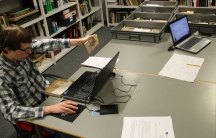
Dr John Clarke led the two day review, conducted as a systematic, tray by tray investigation, resulted in the discovery of some interesting specimens and oddities. The results of this review will occur as an overview, with some of the highlights below.
The Gold specimens
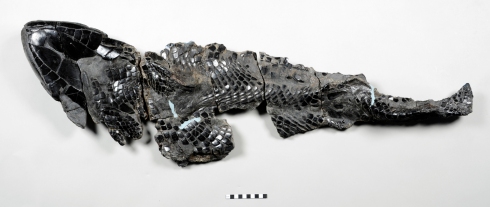
Leedm.B.1883.12
An incredible, near complete specimen of a large Megalichthys hibberti (3 Gold stars – Leedm.B.1883.12) preserved on its back, from the Carboniferous. Found in Yorkshire, England.
The Silver specimens
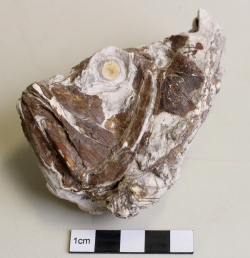
Leedm.B.1979.06.0129 (left)

Leedm.B.1979.06.0129 (right)
A wonderful disarticulated head specimen of a Cretaceous Hoplopteryx lewesiensis (1 Silver star – Leedm.B.1979.06.0129) from Lewes, Sussex, England. Both left and right sides photographed.
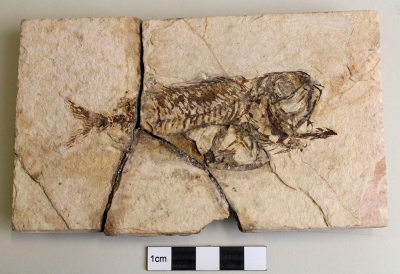
Leedm.B.1979.06.0078
An interesting Eocene specimen of Berybolcensis leptacanthus (1 Silver star – Leedm.B.1979.06.0078) from Monte Bolca, Italy. Specimen has suffered some damage with repair.
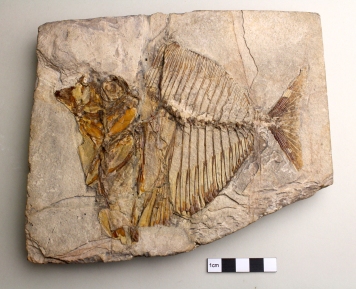
Leedm.B.1979.06.0165
A well preserved and near complete Eocene specimen of a Mene rhombeus (1 Silver star – Leedm.B.1979.06.0165) also from Monte Bolca, Italy.
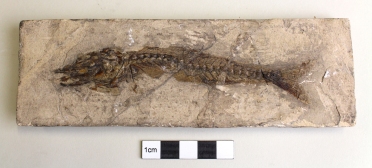
Leedm.B.1979.06.0152
Another well preserved and very interesting Eocene specimen of a Ductor venstenae (1 Silver star – Leedm.B.1979.06.0152) from Monte Bolca, Italy.

Leedm.B.1979.06.0140
A wonderful Jurassic specimen of a Callipurbeckiidae (1 Silver star – Leedm.B.1979.06.0140) with well preserved features, from Wiltshire, England. Specimen has suffered some damage.
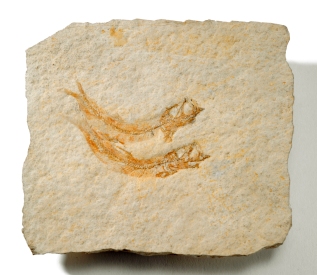
Leedm.B.1979.06.0164
A wonderful Jurassic specimen of two Leptolepis sprattiformis (1 Silver star – Leedm.B.1979.06.0164) from the Solnhofen, Germany. Currently on display at Leeds City Museum.

Leedm.B.1979.06.0076
A curious Eocene specimen of a Sparnodus? microstomus (1 Silver star – Leedm.B.1979.06.0076) from Monte Bolca, Italy. Identification is uncertain, as the specimen may be a composite of two fossils.

Leedm.B.TN5165
A well preserved, but curious Jurassic specimen of a Lepidotes semiserratus (1 Silver star – Leedm.B.TN5165) from the Lias, Whitby, North Yorkshire, England. Featuring a three dimensionally preserved articulated head. Curiously, at some point in the past this specimen has been reconstructed and exhibited the wrong way up, as a coelacanth.
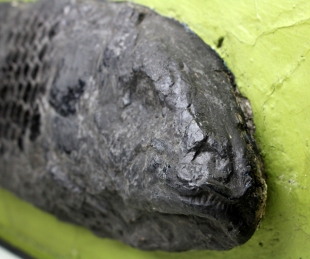
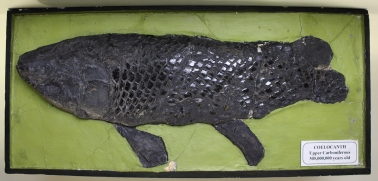
The Bronze specimens

Leedm.B.1979.06.0124 (left)

Leedm.B.1979.06.0124 (right)
A good three dimensionally preserved head specimen of a Cretaceous Thrissopater? megalops (3 Bronze stars – Leedm.B.1979.06.0124) from Lewes, Sussex, England.
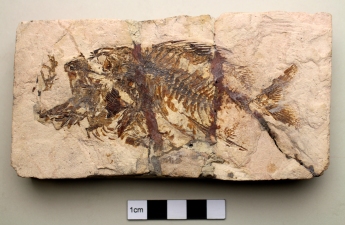
Leedm.B.1979.06.0112
An interesting and nicely preserved Eocene specimen of a Holocentrum macrocephalum (1 Bronze star – Leedm.B.1979.06.0112) from Monte Bolca, Italy.
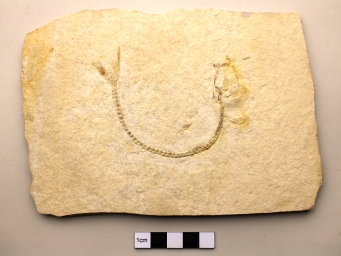
Leedm.B.1979.06.0160
A nicely preserved specimen of a Jurassic Leptolepides sprattiformis. (1 Bronze star – Leedm.B.1979.06.0160) from the Solnhofen, Germany.
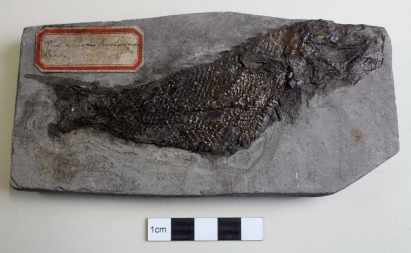
Leedm.B.1979.06.0008
An interesting, near complete Jurassic specimen of a Pholidophorus pachysomus (1 Bronze star – Leedm.B.1979.06.0008) from Lyme Regis, Dorset, England.
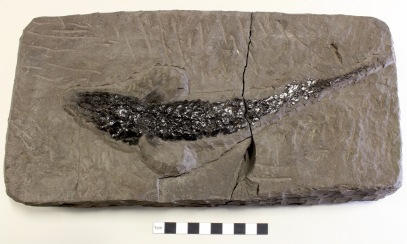
Leedm.B.1979.06.0086
A nicely preserved Carboniferous specimen of a Osteolepis sp (1 Bronze star – Leedm.B.1979.06.0086) from England. Specimen has suffered some damage.

Leedm.B.1979.06.0088
A well preserved and near complete Cretaceous specimen of a Macropoma mantelli (1 Bronze star – Leedm.B.1979.06.0088) from Lewes, Sussex, England.
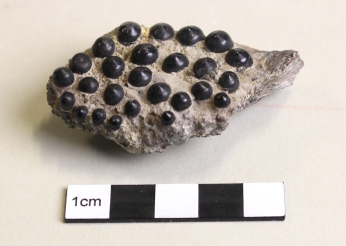
Leedm.B.1979.06.0156
A rare and nicely preserved specimen of a Jurassic Athrodon sp (1 Bronze star – Leedm.B.1979.06.0156) from Germany.
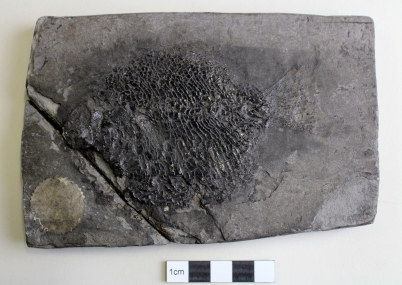
Leedm.B.1979.06.0003
An interesting and nicely preserved Jurassic specimen of a Dapedium sp (1 Bronze star – Leedm.B.1979.06.003) from Lyme Regis, Dorset, England. Specimen has suffered some damage now repaired.
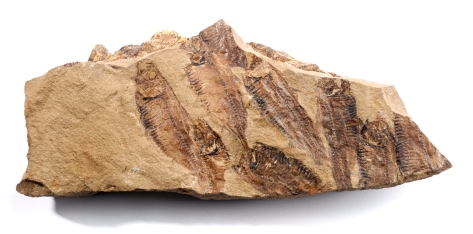
Leedm.B.1985.05.03
A wonderful Eocene assemblage of numerous Gosiutichthys sp (1 Bronze star – Leedm.B.1985.05.03) specimens, from Green river, Wyoming, USA. On display at Leeds City Museum.
The clear specimens
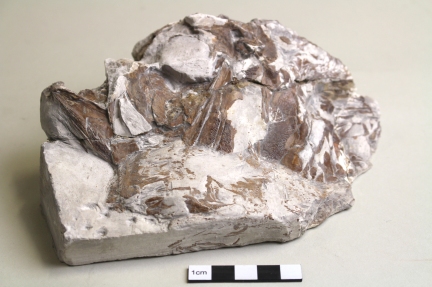
Leedm.B.1979.06.0042
An interesting and nicely preserved Cretaceous specimen of a Hoplopteryx lewesiensis (1 Clear star – Leedm.B.1979.06.0042) from Lewes, Sussex, England.
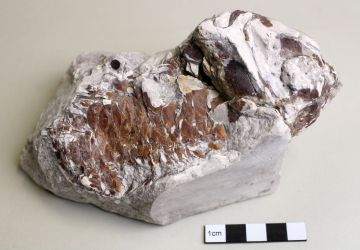
Leedm.B.1979.06.0127
A fair Cretaceous specimen of a Ctenothrissa radians (1 Clear star – Leedm.B.1979.06.0127) from Lewes, Sussex, England.
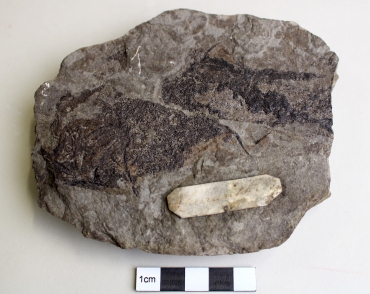
Leedm.B.1979.06.0015
A fair, incomplete, Devonian specimen of a Cheiracanthus sp (1 Clear star – Leedm.B.1979.06.0015) from Gamrie, Banffshire, Scotland.
The review covered 204 specimens, establishing the following summary.
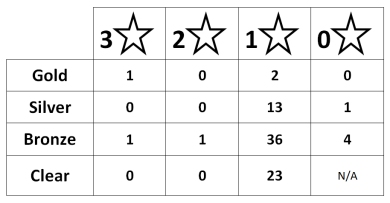
Gold = A truly amazing specimen; Silver = A very good specimen that has great potential; Bronze = A good specimen which can demonstrate a particular feature; Clear = A specimen that has limited visual qualities.
3 stars = High scientific importance; 2 stars = Moderate scientific importance; 1 star = Fair scientific importance; 0 stars = Supported by limited or no documentation.
Summary
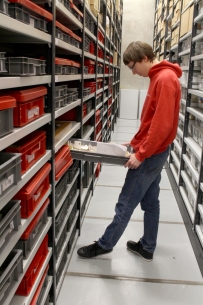 The collection of fossil fishes in the Leeds Discovery centre is relatively small, totalling 18 trays. Roughly 8 of these contain micro or fragmentary remains, while 10 contain articulated specimens. The specimens are well stored and cared for. The curator continues to update the information for the specimens based upon more recent identification information, and efforts are being made to digitise parts of the collection. All the specimens are easily accessible for study.
The collection of fossil fishes in the Leeds Discovery centre is relatively small, totalling 18 trays. Roughly 8 of these contain micro or fragmentary remains, while 10 contain articulated specimens. The specimens are well stored and cared for. The curator continues to update the information for the specimens based upon more recent identification information, and efforts are being made to digitise parts of the collection. All the specimens are easily accessible for study.
Strengths
The collections feature numerous articulated specimens in perfectly suitable condition for various types of trait measurement, from several well-known Lagerstätten. Most notable are specimens from the English Chalk, of which there are around 8 articulated specimens with intact heads and two with postcranial, along with more fragmentary material. There are also 5 articulated specimens from Monte Bolca, including Berybolcensis leptacanthus, Mene rhombea, Blochius longirostris, Ductor vestenae and cf. Sparnodus. Five or six specimens from the Devonian of Scotland are worthy of further examination, as is the collection of Lower Jurassic ‘pholidophorids’ (~8) and Dapedium (~5). Other articulated specimens are typically the sole representative of their deposit in the collections.
Weaknesses
Many specimens lack provenance and stratigraphic details, obscuring the potential historical importance of the collection. Because it is difficult to trust the locality information of many specimens, the scientific value of the collection is also reduced, as few firm claims that hinge upon site information can be substantiated. Nevertheless, the matrix of numerous taxa can be relatively well matched to famous sites, and so can still be utilized to some degree.
The fossil fish, along with all the other collections are open and free for anyone to view by appointment, just call Leeds Discovery Centre on 0113 378 2100 or email discovery.centre@leeds.gov.uk
I would like to take this opportunity to thank John for this review over two great days, and for his invaluable help identifying and updating taxonomic names.
The Shark Review
How the review works The aim of the review is to establish material that is of scientific merit and specimens which are good representatives, possessing public potential for display and community events. These two criteria do not necessarily go hand in hand; as a specimen may have a fantastic scientific research potential, but may not be visually impressive. Therefore the specimens are graded against two separate criteria: Scientific Merit (as a numerical value of stars) and Public Engagement (as a Gold, Silver or Bronze status). For a more in depth look into the review criteria, click on the Review Criteria tab above.
The shark collection consists of 6 trays containing 243 specimens from around the world and is almost entirely of Carboniferous, Cretaceous, Neogene and Quaternary specimens.
The bulk of the collection is stored in the archives at the Discovery Centre, with a few specimens on display at Leeds City Museum.
There is a strong representation of Cladodus, Otodus, Striatolamnia, Dwardius, Carcharocles and Ptychodus sharks; along with Psammodus, Copodus chimaera.
Dr Charles Underwood led the one day review, conducted as a systematic, tray by tray investigation, resulted in the discovery of some very good specimens. The results of this review will occur as an overview, with some of the highlights below.
The Silver specimens
A very good Cretaceous shark tooth specimen of Paraisurus macrorhiza, (1 Silver star – Leedm.B.1979.06.0107.02) rare to find with root, from the Cambridge Greendsand formation. Has no locality.
Three amazing Carboniferous shark teeth specimens of Cladodus sp (1 Silver star – Leedm.B.1979.06.0069.01-03) in a limestone matrix, from Richmond, Yorkshire, England.
A well preserved “tongue stone” Miocene shark tooth specimen of Carcharocles sp. (1 Silver star – Leedm.B.2010.44.1) with fine serrated edges and damaged root, from Malta.
An impressive Pliocene shark tooth specimen of Carcharocles megalodon (1 Silver star – Leedm.B.TN2230) with some minor damage, from South Carolina, USA.
Two Cretaceous Hybodontiform shark teeth specimens of Ptychodus decurrens (1 Silver stars – Leedm.B.TN4373) from Kent, England.
An uncommon Pliocene Great white shark tooth specimen, Carcharodon carcharias (0 Silver stars – Leedm.B.1979.06.0105.03) with strong serrations and no root. Has no locality data.
A well preserved Cretaceous Otodontid shark tooth specimen of Dwardius woodwardi (0 Silver stars – Leedm.B.1979.06.0104) with lateral cusps and root, from the Cambridge Greensand formation. Has no locality data.
Two wonderful Cretaceous Hybodontiform shark teeth specimens of Ptychodus marginalis (0 Silver stars – Leedm.B.2014.04) with beautifully preserved surface details. Has no locality data.
A striking Pleistocene Mackerel shark tooth specimen of Otodus obliquus (0 Silver stars – Leedm.B.1979.06.0035) slightly worn with lateral cusps and root, from the Red Crag formation. Has no locality data.
A very good Eocene Sand shark tooth specimen of Striatolamia macrota (0 Silver stars – Leedm.B.1979.06.0028.01) with lateral cusps and root. Has no locality data.
The Bronze specimens
A good Cretaceous Sand tiger shark tooth specimen of Hispidaspis sp (1 Bronze star – Leedm.B.1979.06.0103) from Cambridge Greensand formation, with no root. Has no locality data.
Two incredible and distinct Carboniferous chimaera teeth specimens of Pristodus falcatus (1 Bronze star – Leedm.B.1979.06.0068.01-02) in a limestone matrix, from Richmond, Yorkshire, England.
A nice Carboniferous shark tooth specimen of Cladodus sp (1 Bronze star – Leedm.B.1874.09.01) in a limestone matrix, from Richmond, Yorkshire, England.
A very striking Neogene Weasel shark tooth specimen of Hemipristis serra (1 Bronze star – Leedm.B.1979.06.0023.01) with root, from South Carolina, USA.
Two wonderful Cretaceous Hybodontiform shark teeth specimen of Asteracanthus ornatisimmus (1 Bronze star – Leedm.B.1979.06.0149.01-02) from Berkshire, England.
A well preserved Tertiary Mackerel shark tooth specimen of Otodus auriculatas (1 Bronze star – Leedm.B.TN4808) with serrated edges, a lateral cusp and slight root damage. From the USA.
A very good Tertiary Crow shark tooth specimen of Squalicorax pristodontus (1 Bronze star – Leedm.B.TN504) with fine serrated edges and slight root damage. From Maastricht, Netherlands.
A well preserved Cretaceous Mackerel shark tooth specimen of Cretodus semiplicatus (0 Bronze stars – Leedm.B.1979.06.0028.02) with lateral cusps and root, from Cambridge Greensand formation. Has no locality data.
A good Miocene shark tooth specimen of Physogaleus (0 Bronze star – Leedm.B.TN2311) with good preservation and root, from the USA.
A large and striking Pliocene specimen of Carcharocles megalodon (0 Bronze star – Leedm.B.TN4584) with slight damage. Has no locality data.
The review covered 243 specimens, establishing the following summary.
Gold = A truly amazing specimen; Silver = A very good specimen that has great potential; Bronze = A good specimen which can demonstrate a particular feature; Clear = A specimen that has limited visual qualities. 3 stars = High scientific importance; 2 stars = Moderate scientific importance; 1 star = Fair scientific importance; 0 stars = Supported by limited or no documentation.
Summary
The collection of shark (and other shark-like fishes- rays and chimaeras) material is relatively extensive and dominated by teeth. These are typically isolated with the notable exception of a partial associated dentition of the Cretaceous shark Ptychodus.
Scientific importance
Whilst there are a number of well preserved and potential useful specimens in the collection, it is evident that at some point a lot of the labelling of specimens has been lost or mixed. As a result, the scientific utility of the material is rather reduced. Despite this there are 3 main highlights of the collection which could be of use in future study.
There is a relatively large collection of teeth of the Cretaceous shark Ptychodus. This includes one partial dentition, and isolated teeth of a number of species. These all appear to originate from the Chalk of South-eastern England but usually without more data. These teeth are actually rare in the Chalk but were collected very intensively in the 19th C. by quarry workers for sale and so there are a large number in collections, most with little or no data.
There are a reasonable number of teeth from the mid Cretaceous Cambridge Greensand. This is a unit no longer accessible and so material cannot be recollected. There are relatively few well preserved teeth, as is typical for this unit, but quite a number of genera are represented.
There are a small number of teeth from the Lower Carboniferous of the Richmond area. These are not that well preserved or prepared but indicate the potential for a significant site that could be re-collected if more data were to come to hand, especially as micro teeth are usually far more common than large ones, and so sampling for these has the potential to yield an important fauna.
In addition, there are very large numbers of teeth that appear to originate from the Red Crag basement bed, which is exposed in Essex and Suffolk. This bed is Pleistocene in age but contains fossils reworked from the Pliocene and Miocene (neither of which are currently exposed in the area) and from the underlying Eocene London Clay. The collection includes sharks and rays from the Pliocene/Miocene and sharks, rays and a chimaeroid from the London Clay. The preservation is typically poor and many of the teeth are very highly abraded. The number of specimens suggests intensive collecting in the past, but lack of provenance, and poor preservation, renders the utility of the material rather limited.
Outreach and other importance
As with many collections of fossil sharks, there are a significant number of teeth of Carcharocles megalodon, at least some from the United States eastern seaboard. These are of minimal scientific significance, as better preserved specimens are very well known, but are very useful for outreach. Teeth are very large and many have well preserved serrations.
The fossil sharks, along with all the other collections are open and free for anyone to view by appointment, just call Leeds Discovery Centre on 0113 378 2100 or email discovery.centre@leeds.gov.uk
I would like to take this opportunity to thank Charlie for a great day and identifying so many of the specimens during this wonderful review.
The Ammonite Review
How the review works
The aim of the review is to establish material that is of scientific merit and specimens which are good representatives, possessing public potential for display and community events. These two criteria do not necessarily go hand in hand; as a specimen may have a fantastic scientific research potential, but may not be visually impressive. Therefore the specimens are graded against two separate criteria: Scientific Merit (as a numerical value of stars) and Public Engagement (as a Gold, Silver or Bronze status).
For a more in depth look into the review criteria, click on the “Review Criteria” tab in the tool bar above.
The Ammonite Review
The Ammonite review is more of a title, as it covered 804 specimens of Ammonites, Coleoids (octopus, cuttlefish, squid) and Nautiloids over 45 trays; alas Belemnites were not covered.
The collection contains specimens from a number of historic SSSI sites, predominantly from the local region of North Yorkshire and the Southern England localities in Somerset, Gloucestershire, Wiltshire, Kent and Dorset. The collection also has a few additional European localities from France, Austria and Germany (Solnhofen). The bulk of the collection are Jurassic specimens with some Carboniferous and Cretaceous material, and are stored in the archives at the Discovery Centre, with some specimens on display at Leeds City Museum. For a detailed analysis, please read Robert’s summary that the end of this review.
Robert Chandler led the 3 day review in a systematic, tray by tray investigation, often insitu in the store, which resulted in the discovery of some incredible specimens. Rather than give a day-by-day account as in previous reviews; the results of this review will occur as an overview with some of the highlights.
The Gold specimens
A wonderful Jurassic Parkinsonia rarecostata (3 Gold stars – Leedm.B.1979.15.293) specimen from Crewkerne station, Somerset, England; part of the Buckman collection.
A very good Jurassic Witchellia laevisulca (3 Gold stars – Leedm.B.1979.15.211) specimen from Dundry hill, Bristol, England; part of the Buckman collection.
A rare and extinct species of Jurassic cuttlefish Loligosepia bollensis (3 Gold stars – Leedm.B.2009.005 & Leedm.B.TN4786) featuring soft body and ink sack preservation, with incredible tentacle hooks (detailed below). From Lyme Regis, Dorset, England. Colour difference due to specimen display past.
A wonderful Jurassic Brasilia bradfordensis (3 Gold stars – Leedm.B.1979.15.6) specimen, rare for its location of Stoke Nappe, Dorset, England; part of the Buckman collection.
A striking Jurassic Radstockiceras sp. (3 Gold stars – Leedm.B.1979.15.53) specimen from Frome, Somerset, England; part of the Buckman collection.
A very interesting Jurassic Pavlovia sp. (2 Gold stars – Leedm.B.1979.15.19) specimen, an inner whorl of a larger ammonite with an abrupt change in shell morphology (below) – evidence of surviving predation. From Hartwell, Oxfordshire, England.
A striking and rare Jurassic Bechiceras sp. (2 Gold stars – Leedm.B.1979.15.47) specimen from Napton, Warwickshire, England.
A wonderful Jurassic Spinikosmoceras sp. (2 Gold stars – Leedm.B.1979.15.4) specimen (male – microconch), compressed with very good preservation and clearly defined lappet. From Chippenham, Wiltshire, England.
An interesting Jurassic Harpoceras sp. (2 Gold stars – Leedm.B.1979.15.228) specimen with unusual shell pathology, as regular indentations on both sides of the phragmocone; indicating predation recovery. From Stockton Hill, near Napton, Warwickshire, England.
A rare and historically cut Parkinsonia dorsetensis (2 Gold stars – Leedm.B.1979.15.117) specimen with underside featuring mudstone and mineral infill (pictured below); from Neather Compton, Dorset, England.
A very good Jurassic Liparoceras sp. (2 Gold stars – Leedm.B.1979.15.123) specimen with unusual and striking preservation; from Warwickshire, England.
An interesting and beautifully preserved Cretaceous heteromorph ammonite Hamites sp. (1 Gold star – Leedm.B.2014.05.780) specimen with additional bivalves in the matrix. From Folkstone, Kent, England.
A wonderful historically cut, unidentified Jurassic Nautilus sp. (1 Gold star – Leedm.B.2015.05.485) with mudstone infill chambers exhibiting beautiful mineralisation (pictured below). From Whitby, North Yorkshire, England.
An interesting Carboniferous Goniatite specimen Gastrioceras carbonarium (0 Gold stars – Leedm.B.1990.01.4095) with no locality data.
The Silver specimens
A truly wonderful Jurassic specimen, featuring numerous Arnioceras semicostatum (2 Silver stars – Leedm.B.1974.15.28) ammonites and gastropods, in a rare burial assemblage. From Whitby, North Yorkshire, England.
An interesting Jurassic Liparoceras sp. (2 Silver stars – Leedm.B.1979.15.54) specimen with crushed inner whorl; from Napton, Warwickshire, England.
A stricking little unidentified Jurassic Nautilus sp. (2 Silver stars – Leedm.B.TN133) with mudstone and Sphalerite infill. From Napton, Warwickshire, England.
A Jurassic Phylloceras heterophyllum (1 Silver star – Leedm.B.1979.15.4) specimen with closely packed ribbing and faint suture lines. From Whitby, North Yorkshire, England.
A curious specimen of an Eocene Nautilus imperialis (1 Silver star – Leedm.B.TN1092) featuring two wonderfully preserved chambers and siphuncle. From Portsmouth, Hampshire, England.
A well preserved Jurassic Androgynoceras sp. (1 Silver star – Leedm.B.1979.15.35) specimen with distinct ribbing; from North Yorkshire, England.
A well preserved Jurassic Cleviceras sp. (1 Silver star – Leedm.B.TN3080) specimen with defined ribbing; from North Yorkshire, England.
A small Cretaceous Euhoplites sp. (1 Silver star – Leedm.B.TN5456) specimen with defined ribbing and nice preservation; from Folkstone, Kent, England.
A very good Jurassic Harpoceras falciferum (1 Silver star – Leedm.B.2011.108) specimen exhibiting additional Dactylioceras ammonites within the matrix. From Whitby, North Yorkshire, England.
A nice Jurassic Hildoceras bifrons (1 Silver star – Leedm.B.TN206) specimen with distinct division of mid-lateral ribbing. From Whitby, North Yorkshire, England.
A very good Cretaceous Deshayesites sp. (0 Silver stars – Leedm.B.1979.15.11) specimen with interesting morphology. Has no locality data.
The Bronze specimens
A less familiar Cretaceous Discohoplites sp. (2 Bronze stars – Leedm.B.1979.15.121) specimen, rare from its locality of Folkstone, Kent, England.
A nice Jurassic Aegoceras lataecosta (1 Bronze star – Leedm.B.1979.15.18) specimen from Warwickshire, England.
A small and nicely preserved common Jurassic specimen, Promicroceras (1 Bronze star – Leedm.B.1998.03.BS) from Charmouth, Dorset, England.
A very nice Harpoceras sp. (1 Bronze star – Leedm.B.2014.05.599) specimen, with superb suture lines. From Ilminster, Somerset, England.
A very good split nodule specimen containing the common ammonite Dactylioceras commune (1 Bronze star – Leedm.B.TN2810) with nice preservation. From Whitby, North Yorkshire, England.
A nicely preserved Jurassic Rasenia involuta (0 Bronze stars – Leedm.B.1979.15.212) specimen, with no locality data.
The review covered 804 specimens, establishing the following summary.
Gold = A truly amazing specimen; Silver = A very good specimen that has great potential; Bronze = A good specimen which can demonstrate a particular feature; Clear = A specimen that has limited visual qualities.
3 stars = High scientific importance; 2 stars = Moderate scientific importance; 1 star = Fair scientific importance; 0 stars = Supported by limited or no documentation.
Robert’s summary of the Ammonite collection.
Strengths & Weaknesses
The storage facility is excellent and the curator is in the process of allocating specimens to trays in to a well-ordered system. The collection comprises a number of Palaeozoic cephalopods including some Lower Palaeozoic specimens and a number of Carboniferous examples, including orthocones and Goniatites and two Palaeozoic specimens from Austria. A number of specimens are well preserved, large and retain good morphological features. Of note are some excellent Gastrioceras from the Coal Measures preserved in stable pyrite that have mouth-borders. There are no Devonian or Triassic specimens in the collection. Presently the trays have accurate contents descriptions (as numbered specimens) but there is no division by taxon or age. A fair number of specimens (mostly Mesozoic) are unworthy of inclusion and are completely indeterminate. The bulk of the collection is of Mesozoic ammonites, both Jurassic and Cretaceous from both local areas and locations further afield including ammonites from France. As one might expect there are numerous ammonites from the Yorkshire area. In particular, there is an extensive and very representative selection of well preserved, complete adult specimens of the genera Hildoceras and Dactylioceras and excellent examples of Harpoceras, Cleviceras and Pseudolioceras from the Lias of Yorkshire. Unfortunately, the vast majority of specimens have little or no data regarding exact locations and those that do simply state ‘Whitby’. A number of these certainly come from other areas along the coast. Some of these ammonites are of display quality and there is a fine Phylloceras to complement this along with other representative specimens. The collection includes a number of ammonites of the genus Pleuroceras and some Lower Lias ammonites of rather poor quality. Surprisingly the Middle and Upper Jurassic of the south of England is rather well represented. At least three excellent specimens of microconch Kosmoceras from Christian Malford, Wiltshire with superb spatulate lappets are present alongside examples from Yorkshire and a small selection of specimens from the Buckman Collection from the Inferior Oolite of Dorset and Somerset including topotypes from Waddon Hill, Stoke Knapp. There are also two specimens of Stephanoceras presumably from White Nab from a marine band in the Deltaic Middle Jurassic sequence there. The significance of these specimens is the presence of a biostratigraphically identifiable horizon of ammonites in what is otherwise a deltaic sequence in the Middle Jurassic of Yorkshire. There is also one superb pathogenic specimen Harpoceras (Leedm.B.1979.15.228). There are a couple of examples of fragments of giant Portlandian ammonites, but without provenance.
Cretaceous ammonites are represented well but few retain locality information and many are in an advanced state of pyrite decay including those from the Harris Collection. Most are Aptian or Albian forms, some from Folkestone, Kent including hoplitids of various species, mostly from the Hoplites dentatus and Euhoplites lautus horizons. Notably the Lower Greensand and some other horizons are poorly represented. There is a small selection from Cambridgeshire and a few examples from Speeton. There are some good, but poorly localised Hysteroceras, Mortoniceras and a fine Deshayesites along with some miserable fragments of various heteromorphs.
The Upper Greensand and Chalk is again fairly well represented by Schloenbachia, Mantelliceras, Calycoceras and a few very fine intact Scaphites – The labels indicate the Isle of Wight and Lyme Regis but I am of the view that some may come from near Eastbourne, Sussex.
Conclusion
There is plenty here for the ammonite specialist to ponder, but its value as a scientific collection is severely limited due to the lack of provenance and stratigraphical precision.
The Ammonites, Nautiloids and Cuttlefish, along with all the other collections are open and free for anyone to view by appointment, just call Leeds Discovery Centre on 0113 3782100 or email discovery.centre@leeds.gov.uk
I would like to take this opportunity to thank Robert for three great, fun filled days. The limitless passion and enthusiasm was a joy to behold. “Thank you” for such a wonderful review.
The Palaeobotany Review
How the review works
The aim of the review is to establish material that is of scientific merit and specimens which are good representatives, possessing public potential for display and community events. These two criteria do not necessarily go hand in hand; as a specimen may have a fantastic scientific research potential, but may not be visually impressive. Therefore the specimens are graded against two separate criteria: Scientific Merit (as a numerical value of stars) and Public Engagement (as a Gold, Silver or Bronze status).
For a more in depth look into the review criteria, click on the “Review Criteria” tab in the tool bar above.
The Palaeobotany review
The palaeobotany collection consists of 131 trays containing 1,384 specimens predominantly from the local region of West and North Yorkshire, with a few additional UK localities. The bulk of the collection is stored in the archives at the Discovery Centre, with some specimens on display at Leeds City Museum and dates back to the 1840’s; with a significant amount of material added to the collection during the 1970’s.
Stratigraphically, the collection predominantly consists of Carboniferous and Jurassic specimens, with notably absence of earlier and later material. The specimens in the collection are very strongly represented by spheonphytes , lycophytes and Ferns; with a moderate representation of other taxa; and a notable under representations of Ginkgos – for a detailed analysis, please read Karen’s summary at the end of this review.
As in previous reviews which covered this amount of material, the best method is a systematic, tray by tray investigation; with the occasional specimen undergoing a prolonged investigation.
Dr Karen Bacon led the review, which resulted in the discovery of some incredible specimens…
Listed below are some of the highlights across a broad range of the collections flora.
The Gold specimens
Two wonderful examples of the Jurassic Williamsonia (3 Gold stars – Leedm.B.1977.30.02.05) exhibiting the underside of the flower structure; and the beautiful Type specimen of Williamsonia himas (3 Gold stars – Leedm.B.1977.30.02.09) both are from Scarborough, North Yorkshire, England and are part of the T.M. Harris collection.
A truly incredible specimen of a Carboniferous Neuropteris (1 Gold star – Leedm.B.TN3541) with wonderfully preserved and interesting leaf variations in a single fern. Specimen has no locality data.
A striking specimen of a Jurassic Equisetum (1 Gold star – Leedm.B.1977.30.02.E) with no compaction and fine detail preservation. Specimen is from Whitby, North Yorkshire, England.
A very good specimen of Carboniferous Lepidodendron and Neuropteris (0 Gold stars – Leedm.B.1977.3.GC) exhibiting numerous fine fern fronds and Lycopsid twigs. Specimen has no locality data.
A truly wonderful specimen of Mariopteris (0 Gold stars – Leedm.B.2008.02.007) with beautifully preserved leaf details. Specimen has no locality data and is currently on display at Leeds City Museum.
The Silver specimens
A wonderful Jurassic specimen of Equisetales (2 Silver stars – Leedm.B.2014.05.772) with no locality data. Unusual to find leaves preserved with the stem, and fairly rare to find in collections.
A striking Carboniferous Calamites specimen (1 Silver star – Leedm.B.2014.05.796) exhibiting slight compression and mineralisation, with good detail preservation. Specimen is from Leeds, West Yorkshire, England.
A very good Jurassic Anamozamites specimen (1 Silver star – Leedm.B.TN3979) with nice leaf preservation. Specimen is from Scarborough, Yorkshire, England.
A wonderful Carboniferous specimen of Neuropteris (0 Silver stars – Leedm.B.TN3337) fern frond tip with very good pinnae preservation. Specimen has no locality data.
A truly incredible Carboniferous specimen of Mariopteris (0 Silver stars – Leedm.B.2008.02.006) frond, with beautifully preserved details and veins. Specimen has no locality data and is currently on display at Leeds City Museum.
A very striking Ulodendron specimen (0 Silver stars – Leedm.XP.1979.3.LG) with nicely preserved distinct morphology. Specimen has no locality data.
A wonderful, large and very heavy specimen of a slightly compressed Lepidophloios trunk (0 Silver stars – Leedm.B.TN6566) with good bark preservation and Lepidostrobus seed heads within the internal matrix. Specimen has no locality data.
A very good specimen of Calamostachys (0 Silver stars – Leedm.B.TN2477) with fine detail preservation. Specimen has no locality data.
A wonderful Carboniferous Calamites tip specimen (0 Silver stars – Leedm.B.TN782) with very good detail preservation. Specimen has no locality data.
A very good Carboniferous specimen of Mariopteris fern fronds (0 Silver stars – Leedm.XP.1979.3.LZ) with beautiful leaf preservation. Specimen has no locality data.
The Bronze specimens
A good Jurassic specimen of Cladophelbis and an unidentified fern (1 Bronze star – Leedm.B.1977.03.02.30) exhibiting fair preservation. Specimen is from Whitby, North Yorkshire, England.
A good Jurassic Pagiophyllum specimen (1 Bronze star – Leedm.B.2014.05.793) from Gristhorpe Bay, North Yorkshire, England.
A good Jurassic Taenopteris specimen (1 Bronze star – Leedm.B.1977.30.02.26) with nice leaf preservation. Specimen is from Scarborough, North Yorkshire, England.
A very good Carboniferous Sigillaria specimen (1 Bronze star – Leedm.XP.1979.3.JQ) with good coalified detail preservation. Specimen is from Wakefield, West Yorkshire, England.
Two interesting Eocene Fan palm specimens (1 Bronze star – Leedm.B.2004.01.0027.1-2) from Bournemouth, Dorset, England.
A good example of a Ptilophyllum specimen (1 Bronze star – Leedm.B.2014.05.675) with fair leaf preservation. Specimen has no locality data.
A very good Carboniferous specimen of the rare variety Lepidodendron ophiurus (1 Bronze star – Leedm.B.TN3197) with unusual details and ridges preserved on the bark. Specimen has no locality data.
A wonderful Stigmaria specimen (1 Bronze star – Leedm.B.TN3334) with slight compression and good detail preservation. Specimen is from Yorkshire, England.
A good example specimen of Caniopteris (1 Bronze star – Leedm.B.1977.30.02.52) with nice detail preservation. Specimen is from Whitby, North Yorkshire, England.
A very uncommon specimen made up of numerous layers of compressed Calamites (0 Bronze stars – Leedm.B.XP.1979.3.AN) exhibiting fair preservation. Specimen has no locality data.
A interesting nodule containing a Neuropteris fern specimen (0 Bronze stars – Leedm.B.XP.1979.3.GQ) with good leaf preservation. Specimen has no locality data.
A very good specimen exhibiting Sphenopteris and Cylopteris ferns (0 Bronze stars – Leedm.B.TN825) with nice detail preservation. Specimen has no locality data.
A good example of a Carboniferous Eupecopteris specimen (0 Bronze stars – Leedm.B.XP.1979.3.DG) with very nice frond detail preservation. Specimen has no locality data.
A nodule containing a Lepidostrobus seed head specimen (0 Bronze stars – Leedm.B.XP.1979.3.EH) with fine detail preservation. Specimen has no locality data.
A very good Mariopteris fern specimen (0 Bronze stars – Leedm.XP.1979.3.GE) with nice frond preservation. Has no locality data.
A lovely specimen of an Alethopteris fern frond (0 Bronze stars – Leedm.B.TN5041) with nice leaf preservation. Specimen has no locality data.
The review covered 1,384 specimens, establishing the following summary.
Gold = A truly amazing specimen; Silver = A very good specimen that has great potential; Bronze = A good specimen which can demonstrate a particular feature; Clear = A specimen that has limited visual qualities.
3 stars = High scientific importance; 2 stars = Moderate scientific importance; 1 star = Fair scientific importance; 0 stars = Supported by limited or no documentation.
Karen’s summary of the palaeobotany collection.
The palaeobotany collection held by Leeds City Museum contains many interesting and well-preserved specimens. The collection is mostly composed of UK (Yorkshire) Carboniferous plant material. The UK Carboniferous is a particular strength of the museum collection and contains specimens of high-quality preservation and of high research value. It is unfortunate that not all samples have specific collection location information, but this is reflective of the long time period covered by sample collection, with many specimens having been collected well over 100–150 years ago.
The museum also holds some excellent UK Jurassic specimens. Most notable are several beautifully preserved Williomsonia samples, a relatively rare Bennettitalian “flower”-type structure. Most impressively, the type specimen identified by Harris is contained within the collection. In my opinion, this would be a nice item to have on display as the fossil itself is scientifically important, beautifully preserved and Harris was one of the most preeminent palaeobotanists of his time (his 1920s/1930s and later work on Jurassic floras is still regularly cited).
Many of the Carboniferous samples are also extremely worthy of display, in particular some samples of Ulodendron, Sphenophyllum, Annularia, Neuropteris and Lepidostrobus are particularly nice for display.
The collection also holds a few samples of Eocene material and some Quaternary (Pleistocene) wood samples that are well-preserved and some nice polished samples of older wood samples.
Strengths: Carboniferous and Jurassic material.
The collection overall is impressive, particularly the extent of its Carboniferous flora. Several interesting samples were found that are easily worthy of display across a range of key taxa, including lycophytes (especially Lepidodendron, Lepidophloios, Lepidostrobus (spore-bearing cones; here too more detailed identification could be useful) and Ulodendron (some very nice samples)), spheonphytes (including Equisetum, Calamites, Annularia, Asterophyllites and Sphenophyllum) and ferns (including Neuropteris and Mariopteris and others but identification needs to be clarified). This covers most of the key taxa of the UK Carboniferous and makes a valuable collection with high research potential.
The Jurassic material also contains numerous very nice fossils of key taxa including Ginkgo, Anomozamites, Pterophyllum, Ptilophyllum, Zamites, Cycadolepsis and Williamsonia (particularly impressive samples). Each of these taxa are represented by some beautiful fossils worthy of display and all having excellent research potential.
Weaknesses: Fern identification and limited time period.
One area of concern is the identification of the substantial and impressive fern collection. The museum holds some lovely Carboniferous fern examples but the identification needs to be fully reviewed for all samples as I suspect that many are mis-identified or (more probably) are using older, less well-defined names.
While the Carboniferous and Jurassic collections are impressive and contains some truly excellent examples of these floras, there is little or no representation of fossil plants from outside of these two time periods. There are a few pieces of Eocene angiosperms and some Pleistocene wood, but other times periods are entirely absent from the collection. Whether this should be considered a problem depends largely on the aims of the museum (I feel that this is not a problem) – if the aim is to specialise in the two periods that are well-represented locally (Yorkshire) then this is a good strategy and is highly relevant to the local geology. However, if the museum wishes to hold a palaeobotany collection representative of UK palaeobotany though time, then some key periods to target include Devonian (Scotland) and Palaeocene/Eocene (South of England – Bournemouth/Southampton areas and London Clay). Some more recent samples might be nice for display purposes but I think that the focus on the Carboniferous and Jurassic is valuable as the collection is of high quality both scientifically and in terms of potential display items.
Note on the currently displayed items
The collection at the Discovery Centre holds a far greater variety and display worthy samples of plant taxa than is currently represented on display. The museum has sufficiently numerous and high-quality samples to develop a beautiful Carboniferous display in particular, and also to develop a high-quality Jurassic display (particularly in relation to Bennettitales).
To close
A lovely collection of Carboniferous and Jurassic plant material with excellent display and scientific potential.
The palaeobotany, along with all the other collections are open and free for anyone to view by appointment, just call Leeds Discovery Centre on 0113 3782100 or email discovery.centre@leeds.gov.uk
I would like to take this opportunity to thank Karen for this wonderful review. The amount of material covered was incredible, spurred on by the odd gem of a specimen. “Thank you” for all your hard work.
Marine reptiles & Dinosaurs Review
How the review works
The aim of the review is to establish material that is of scientific merit and specimens which are good representatives, possessing public potential for display and community events. These two criteria do not necessarily go hand in hand; as a specimen may have a fantastic scientific research potential, but may not be visually impressive. Therefore the specimens are graded against two separate criteria: Scientific Merit (as a numerical value of stars) and Public Engagement (as a Gold, Silver or Bronze status).
For a more in depth look into the review criteria, click on the “Review Criteria” tab in the tool bar above.
The Vertebrate palaeontology:
Marine reptiles & Dinosaurs Review
The marine reptile & dinosaur collection consists of 26 trays containing 245 specimens and as in previous reviews, it was decided that the amount of material would suit the review being conducted as a detailed, systematic, tray by tray investigation; finishing with the large scale specimens.
The collection contains a variety of marine reptile material featuring: numerous Ichthyosaur skulls, jaws, isolated teeth and vertebrae; with some superb and historic full skeletons. Plesiosaur material consists of a few isolated teeth, a historic headless full skeleton and some limb girdles. Pliosaur material is scarce, consisting of a few isolated teeth. Crocodiles are represented as a disarticulated steneosaurus skull and fossilised eggs; and finally a rare Nothosaur solitary rib fragment.
The dinosaur material is more abundant, but less diverse, featuring: a Hadrosaur forelimb bone, Hylaeosaurus vertebrae, and a Hypselosaurus egg, along with numerous Hypselospinus fossil bones (approx 10% complete skeleton).
Day One.
Will Watts led the review, starting with the entire collection of Iguanodont fossils, identified as Hypselospinus fittoni. These have been accessioned individually and it was agreed that if it were reconstructed, the specimen would score 3 Gold stars. For the purpose of this review, each individual fossil bone would be systematically reviewed on its own merit.
The majority of the collection was discovered in Sussex, UK during the early 1860’s by Edwin Austin and was donated to Leeds Museum in 1866; and is a rare and historic specimen with scientific value.
Two interesting Hypselospinus fittoni ribs sections (3 Bronze stars – Leedm.B.1866.01.73.01) and (3 Bronze stars – Leedm.B.1866.01.66) combining to make a superb distal section of rib.
The distal end of a radius, from a juvenile Hypselospinus fittoni (3 Silver stars – Leedm.B.1866.01.35) featuring a convincing tooth shaped indentation, with the impacted bone surface fossilised within the cavity. Further research would be needed, but could be very nice evidence for predation or scavenging.
A striking Hylaeosaurus sp. vertebra (3 Silver stars – Leedm.B.1866.01.40) exhibiting distinct rib attachments and neural canal.
A wonderful Hypselospinus fittoni ungual phalanx or claw, from the left foot, IV digit (3 Silver stars – Leedm.B.1866.01.92)
A larger Hypselospinus fittoni dorsal vertebra (3 Bronze stars – Leedm.B.1866.01.41.1-3) made up by three specimens, with matrix in the neural canal.
A small Hypselospinus fittoni caudal or tail vertebra (3 Bronze stars – Leedm.B.1866.01.68). This specimen is very close to the tip of the tail, but sadly the tip is absent in the collection.
A fragile but wonderful Hypselosaurus priscus (3 Gold stars – Leedm.B.1980.01) a Sauropod egg from Bouches-du-Rhône, France; currently on display at Leeds City Museum.
The middle section of a Hypselospinus fittoni femur (2 Bronze stars – Leedm.B.1866.01.99.01) and (2 Bronze stars – Leedm.B.1866.01.99.02) from Sussex, England. Two poorly preserved specimens combining to make a robust femur, lacking both distal and proximal ends (photo taken during the review).
This was a truly unexpected find that made both Will and I gasp. Both specimens have a highly eroded surface that had complicated the original misidentification. It was only when the two specimens were joined that the specimen revealed its secret and true inner beauty.
An unidentified Crocodile egg (1 Bronze stars – Leedm.B.1985.05.04) from Bas-Rhin, France; in a limestone and pisolite matrix.
A very nice Pliosaur tooth (1 Silver star – Leedm.B.TN3406) from Dorset, England. A rare specimen in the collection.
A rare Triassic Nothosaur rib (1 Clear stars – Leedm.B.1955.61.BBN) on a limestone matrix from Bavaria, Germany.
Day Two – Reconstructing a Dinosaur.
The decision was taken before the review to reconstruct the Iguanodont fossils for two reasons:
- To assess the amount material; as 11 trays of isolated fossils give little indication of how much skeletal material there is in the collection.
- The material had not been reconstructed for decades, with no records of any full reconstruction within the last century.
… and lets admit it – Because it’s awesome!
The material had been reviewed on day 1, so we had a general idea of what the final reconstruction would look like. But in reality, the final assemblage proved somewhat different…
The morning commenced with laying the trays out to help with specimen retrieval. The reconstruction started with the tip or near tip of the tail, with the individual specimens being laid out on Plastazote foam. In a short space of time the first sheet of Plastazote was quickly filled as the tail grew in length, with alterations occurring along the way.
Glenn and Will progressed with the tail, which began to take shape; sorting the dorsal and caudal vertebra, and neural arches to establish a rough sequence.
Glenn continued with the vertebrae with some fine tuning of the caudal sequence until finally content, then turned his attention to the tray of ribs. with daunting task of reuniting individual fragments into longer lengths of rib specimens.
Will and I began working on the foot, piecing together the phalanx material, which began to take shape at a gathering pace. One important discovery was the realisation that some misidentified limb bones were in fact metatarsals, extending the foot material and giving a greater impact.
Whilst Glenn worked on the ribs and I worked on the foot, Will turned his attention to identifying and sorting out the numerous generic limb bones with reuniting specimens to produce longer lengths of limb bones, and some wonderful discoveries: a femur distal extremity, a small fragment of ilium, both proximal and distal extremities of tibia and fibula.
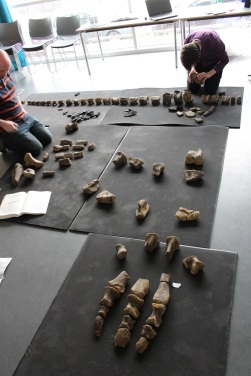
With time drawing to a close, Glenn makes final alterations to the tail, as the material takes shape
A wonderful outcome of this event was achieved by all three of us in reuniting numerous parts and counter-parts of specimens that until now had no records of being the same fossil bone, and identifying some material that had been misidentified.
Unfortunately, with only one day to undertake this reconstruction, time was beginning to slip away. The decision was taken to assemble the individual elements that we had achieved as an overview of the dinosaur. This event would have prospered from another day or two to insert more fossil material, but it had achieved the main goals in assessing the amount of fossil material in the collection, as a broad reconstruction.
A little more investigation into the material is required, but an additional outcome of this event was to investigate the possibility for a future public event. As a result, a reconstruction and interpretation is planned to go on temporary display at Leeds City Museum in 2016.
At the time of the review the material was simply classified as Iguanodon, and was believed to be of the same individual animal. Since then, a further investigation has established the specimens identities, and further more – the collection is made up of four individuals; three adults and one juvenile, with the vast majority of the material belonging to one adult Hypselospinus fittoni.
Day Three.
The review resumed with some amazing and somewhat surprising discoveries, notably a superb Ichthyosaur (3 Gold stars – Leedm.B.1849.9) a splayed full skeleton, exhibiting extreme distortion of the skull with rigor mortis curvature of the spine (below) from Somerset, England. A framed and historically mounted valuable specimen.
A large scale framed Plesiosaur cast (1 Gold star – Leedm.B.1846.6) of Thomas Hawkins replica, with historic importance.
Two display worthy coprolites (1 Silver star – Leedm.B.1980.03.01) as a smaller solid mass, and (1 Gold star – Leedm.B.1980.03.02) as the larger cut and polished specimen, exhibiting an interior nucleus. Both from Utah, USA.
A well preserved Pliosaur tooth (1 Gold star – Leedm.B.TN5830) on a limestone matrix with echinoid spine; from Dorset, England.
A striking unidentified footprint (0 Silver stars – Leedm.B.TN1671) from an unknown location.
An unusual and quite rare Ichthyosaur vertebrae (0 Silver stars – Leedm.B.TN5126) cut and polished cross-section of articulated vertebrae, from an unknown location; possibly Yorkshire Lias, England.
A wonderful Ichthyosaur rib (0 Bronze stars – Leedm.B.TN1825) in relief on a mudstone matrix, with no data and low scientific value.
A beautiful Ichthyosaur skull (2 Silver stars – Leedm.B.1847.16) from Somerset, England. A framed and mounted historic specimen.
Three specimens worthy of a mention but not photographed here are:
A wonderful cast of Archaeopteryx (0 Gold stars – Leedm.B.2011.110).
An exquisite full skeleton of a small or juvenile Ichthyosaur, possibly Stenopterygius (1 Gold stars – Leedm.B.TN5273).
Two vertebrae from the Carboniferous amphibian, Pholiderpeton (2 Clear stars – Leedm.B.TN1170).
The review covered 245 specimens establishing the following summary.
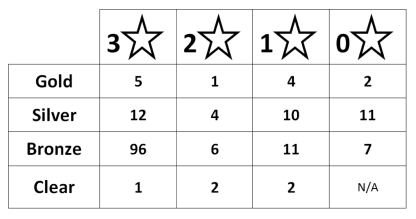 Gold = A truly amazing specimen; Silver = A very good specimen that has great potential; Bronze = A good specimen which can demonstrate a particular feature; Clear = A specimen that has limited visual qualities.
Gold = A truly amazing specimen; Silver = A very good specimen that has great potential; Bronze = A good specimen which can demonstrate a particular feature; Clear = A specimen that has limited visual qualities.
3 stars = High scientific importance; 2 stars = Moderate scientific importance; 1 star = Fair scientific importance; 0 stars = Supported by limited or no documentation.
Summary of the Marine reptiles & Dinosaurs Review.
Strengths
The historical nature of the collection, dating back to the 19th Century, make some of the specimens important not just for their scientific value but also for their own history and relationships with early geologists and collectors. There are some important specimens in their own right too, including the Iguanodonts, the marine vertebrates.
The collection of Jurassic material is strongly represented by some Whitby & Yorkshire Coast material, but is predominantly made up of specimens from the Dorset Coast; consisting of a number Ichthyosaur, Plesiosaur and Pliosaur teeth and skeletal material, with four historic and rare – large scale specimens from significant UK sites.
Additionally, there are some unusual and interesting specimens: A Steneosaurus rostrum and partial skull material, a Hypselosaurus egg from France, large scale ripple beds with Chirotherium footprints, coprolites and Iguanodon skeletal material – that requires further investigation.
Historic casts of Archaeopteryx and the Thomas Hawkins Plesiosaur.
Weaknesses
There are many unusual and/or interesting specimens that lack locality information. Sadly the loss of data on some prime specimens diminishes any research value, with minor pyrite decay.
A lack of Pliosaur material and little or limited ichnofossil footprints.
The Triassic and Cretaceous are both poorly represented, and apart from a few specimens from France and the USA, the entire collection is made up of UK material.
The fact the collection has not be actively added to for a number of years means that it is very much a historical collection with the problems that brings around conservation and also in terms of the patchy nature of how the material has been prepared and in some cases mounted. Compared to other regional museums (Yorkshire Museum and Manchester Museum for example) the collection is very small.
The Marine reptiles and Dinosaur specimens, along with all the other collections are open and free for anyone to view by appointment, just call Leeds Discovery Centre on 0113 378 2100 or email discovery.centre@leeds.gov.uk
I would like to take this opportunity to thank Will for a wonderful and exciting review over the three amazing days; it was a delight to reconstruct the dinosaur. I would also like to thank Glenn Roadley for all his help and contributions during the reconstruction on day two; and Dr. David Norman for his post review identifications and assistance.
The Mineral Review
How the review works
The aim of the review is to establish material that is of scientific merit and specimens which are good representatives, possessing public potential for display and community events. These two criteria do not necessarily go hand in hand; as a specimen may have a fantastic scientific research potential, but may not be visually impressive. Therefore the specimens are graded against two separate criteria: Scientific Merit (as a numerical value of stars) and Public Engagement (as a Gold, Silver or Bronze status).
For a more in depth look into the review criteria, click on the “Review Criteria” tab in the tool bar above.
The Mineral Review
The mineral collection consists of 181 trays containing 4,492 specimens from around the world. The bulk of the collection was collected between the 1890’s and 1930’s from mines and locations that are now closed or have protective legislation and considered to be of significant historic importance. This includes numerous UK specimens from: Herodsfoot Mine and Virtuous Lady Mine in Cornwall, Susannah Mine in Lanarkshire, Ecton Copper Mine in Staffordshire, Blackdene Mine in County Durham, and the West Cumbrian Ore Field in Cumbria.
This wealth of material means Leeds Museum houses an impressive collection of specimens from local region, broader UK material, with European and other world-wide minerals.
The huge amount of material created a dilemma as to which method would suit the review. It was decided to be conducted in two methodologies.
One method was a rapid, systematic, tray by tray investigation, often in the store, with trays containing a variety of minerals.
The second method was to lay out the trays of an entire sub-category of a particular mineral type to get a broad overview; then focus on the more striking specimens. This method worked very well for the larger collections of Fluorites and Quartz.
Dr Monica Price led the review over three days, which resulted in the discovery of some incredible and important specimens.
Rather than give a day-by-day account as in previous reviews; the results of this review will occur as an overview with some of the many highlights, in a descending order of “wow” factor and awards.
The “WOW” specimens.
Previous reviews have sometimes had the occasional “wow” when examining specimens, but the minerals seemed to have more than normal. 10 specimens received a sharp intake of breath, then followed by a “wow” from Monica. This could be interpreted as a new Platinum category, but they will be just highlighted as the “wow” specimens. Below are eight of the nine Gold specimens, and one Silver specimen that received this accolade.
Specimens scoring 3 Gold stars with the wow factor:
A wonderful and important specimen of Lanarkite (3 Gold stars – Leedm.B.1952.56.0505) from the Susannah Mine in Lanarkshire, Scotland.
The rare and incredible lead mineral, Matlockite (3 Gold stars – Leedm.B.1952.56.0178) from Derbyshire, England.
Specimen scoring 2 Gold stars with the wow factor:
An amazing specimen of the important titanium ore mineral, Rutile (2 Gold stars – Leedm.B.1952.56.0153) from Zinnwald, Czech Republic. Exhibiting genicular twinning or knee twin, as a change in the crystal shape that resembles a knee joint.
Specimens scoring 1 Gold star with the “wow” factor:
A wonderful example of a Nail-head Calcite crystal (1 Gold star – Leedm.B.1990.01.0212) from the Ecton Copper Mine in Staffordshire, England.
An incredible specimen of the important tin ore mineral Cassiterite (1 Gold star – Leedm.B.1952.56.0159) from Zinnwald, Czech Republic.
A wonderful specimen of the Zeolite variety Chabazite (1 Gold star – Leedm.B.1952.56.0405) from Ústí nad Labem, Czech Republic; formed as a result of the metamorphism of trapped bubbles in lava.
A beautiful specimen of Fluorite (1 Gold star – Leedm.B.1990.01.0161) in fantastic condition from County Durham, England.
A spectacular specimen formed by the weathering of copper minerals as Azurite (1 Gold star – Leedm.B.1979.02.0600) from the région parisienne, France; currently on display in the Museum.
Specimen scoring 1 Silver with the wow factor:
The scarce and remarkable copper ore specimen Chalcocite (1 Silver star – Leedm.B.1952.56.0021) from Cornwall, England.
The Gold specimens.
A wonderful specimen of Calcite (2 Gold stars – Leedm.B.1952.56.0231) from the historically important Herodsfoot Mine in Cornwall, England.
A truly beautiful copper and aluminium phosphate specimen of Turquoise (2 Gold stars – Leedm.B.1982.01.06) from Cornwall, England.
A specimen of the rare mineral Phosgenite (2 Gold stars – Leedm.B.1952.56.0315) from Derbyshire, England.
A stunning and important example of the copper variety of Smithsonite (2 Gold stars – Leedm.B.1952.56.0292) from Cumberland, England.
A truly beautiful and often unseen specimen of an uncut Ruby within its matrix (2 Gold stars – Leedm.B.1982.01.03) from Mysore, India.
A very striking specimen of Fluorite (1 Gold star – Leedm.B.1990.01.0170) from the Blackdene Mine in County Durham, England.
A wonderful and interesting iron ore specimen of Hematite with Smoky Quartz (1 Gold star – Leedm.B.1979.02.0494) from the West Cumbrian Ore Field, Cumbria, England.
A stunning specimen of Epidote (1 Gold star – Leedm.B.1952.56.0418) from the Tyrol, Austria; currently on display in the Museum.
A wonderfully prepared and organic looking Quartz Chalcedony (0 Gold stars – Leedm.B.1979.02.0362) from an unknown location.
A spectacular and fibrous Natrolite (0 Gold stars – Leedm.B.1937.13.28B) from an unknown location.
The Silver specimens.
An incredible naturally magnetic and iron ore specimen Magnetite (2 Silver stars – Leedm.B.1952.56.0161) from an important site in Thuringia, Germany.
A breath taking specimen of Native Silver (2 Silver stars – Leedm.B.1937.13.07.1) from Kongsberg, Norway.
A very good example of Phosgenite (2 Silver stars – Leedm.B.1952.56.0312) from Derbyshire, England.
An important specimen of Rhodochrosite (2 Silver stars – Leedm.B.1952.56.0303) from Cornwall, England; formed in hydrothermal veins.
An uncommon specimen of Malachite featuring large crystal formation (2 Silver stars – Leedm.B.1952.56.0202) from Siegen-Wittgenstein district, Germany.
A beautiful specimen of Fluorite (2 Silver stars – Leedm.B.1952.56.0180) from Cornwall, England; currently on display in the Museum.
A wonderful specimen of Smoky Quartz (1 Silver star – Leedm.B.1952.56.0106) from the Reichenbachtal valley in Oberhasli, Switzerland.
An interesting specimen of botryoidal “starburst” clusters of Wavellite (1 Silver star – Leedm.B.1952.56.0450) from Clonmel, Ireland; formed in hydrothermal veins.
A wonderful antimony ore specimen of Bournonite (1 Silver star – Leedm.B.1998.03.0593) from the historically important Herodsfoot Mine in Cornwall, England; exhibiting the classic cog-wheel twinned crystals.
A very good specimen of Clinochlore (1 Silver star – Leedm.B.1998.04.069.1) from Piedmont, Italy; currently on display in the Museum.
A rare and beautiful specimen of an uncut Emerald in a Schist matrix (1 Silver star – Leedm.B.1938.02.307) from an unknown location.
A striking cluster of the silicate gem specimens Tourmaline (0 Silver stars – Leedm.B.1938.02.311) from an unknown location.
A wonderful specimen of Azurite (0 Silver stars – Leedm.B.1979.02.0599) from an unknown location.
The Bronze specimens.
A good example specimen of Fluorite (2 Bronze stars – Leedm.B.1990.01.0113), rare for its location in Cornwall, England; exhibiting unusual etched patterns on the bevelled edge of the crystal.
A wonderful and rare specimen of Siderite crystals (2 Bronze stars – Leedm.B.1952.56.0308) from the historically important, Virtuous Lady Mine in Cornwall, England.
An uncommon and often rare in collections, specimen of Stolzite (2 Bronze stars – Leedm.B.1952.56.0346) from Cornwall, England.
A very nice example of the rare mineral Stephanite (2 Bronze stars – Leedm.B.1952.56.0069) from the Mittelsachsen district, Germany.
A beautiful and uncut corundum gem of Sapphire (1 Bronze star – Leedm.B.1982.02.02) from an unknown location.
A beautiful specimen of the blue Beryl Aquamarine (1 Bronze star – Leedm.B.1979.02.0926) from Russia.
The review covered 4,492 specimens, establishing the following summary; with an unprecedented amount of material reviewed and scored. The Clear specimen have not been mentioned or photographed, but contained some interesting mineral specimens, which may not have an immediate appeal, but are of research value.
Gold = A truly amazing specimen; Silver = A very good specimen that has great potential; Bronze = A good specimen which can demonstrate a particular feature; Clear = A specimen that has limited visual qualities.
3 stars = High scientific importance; 2 stars = Moderate scientific importance; 1 star = Fair scientific importance; 0 stars = Supported by limited or no documentation.
Monica’s summary of the mineral collection.
It was very pleasing to find an interesting, quality collection of minerals in Leeds Museum. Most were field collected before or during the last century; very little dates from the end of the 20th or the current century. The evaluation did not allow time for any details of collectors to be checked, but there were some dealers’ labels among the original labels stored with specimens. Older labels include those of the German company F. Krantz of Bonn. More recent ones include Gregory, Bottley and Lloyd, and Isis Minerals, both reputable companies.
Strengths
The collection comprises overwhelmingly the more common species, many in a good range of varieties. Of the relatively small number of rarer species found in the collection, there were some very fine examples, for example the lead minerals matlockite, phosgenite,and leadhillite.
The collection is particularly strong in specimens from Derbyshire, Yorkshire, the lead mines of the Weardale area of Co. Durham, and the west Cumbrian iron ore-field, but overall it has large numbers of specimens from a wide variety of UK localities, including the Lake District, Flintshire, Leadhills and Wanlockhead in Scotland, the West Country and the Isle of Man. These are the classic UK localities up to the Second World War and as nearly all the mines and quarries are now closed, the specimens are all the more important as both historical and scientific resources.
I would particularly note the substantial number of specimens for which not only is the mine name specified, but also the level or vein in the mine. These offer particular interest and potential for those carrying out topographic mineralogy research such as the more scientific members of the Russell Society.
As might be expected in a collection (or series of collections) of this time largely accumulated through collectors’ purchase and exchange rather than primary fieldwork, there are also good locality specimens from overseas, predominantly Germany, Russia and eastern European countries. These widen the diversity of species available for display and study. They rarely have such detailed locality information – it seems there was little demand on dealers to provide this information, and indeed some dealers were reluctant to reveal their sources.
Weaknesses
The Leeds Collection particularly lacks good pyrite (crystals from Peru or from Navajun, Spain are more stable than most UK material), sapphire (a gem variety of corundum, blue or other colours), and rhodochrosite (manganese carbonate – pink crystals found in weathered manganese ore deposits), and has little in the way of rare earth element minerals.
Locality information is key to mineral specimens and their potential for general interest and particularly for research. There were some specimens with no locality data at all, particularly varieties of quartz, but the proportion was not excessive. It would be possible for some experienced collectors and mineral curators to attribute data for at least some of these time constraints did not allow me to focus on doing this.
To Close
Leeds Museum has a good mineral collection, which has lots of potential for use at various levels. In my experience, the collection is not well known and I think a formal article in the Russell Society Journal or an informal one for the Society’s newsletter would bring the collection to the attention of amateur and professional researchers.
Please visit Monica Price’s blog for her experience.
The minerals, along with all the other collections are open and free for anyone to view by appointment, just call Leeds Discovery Centre on 0113 378 2100 or email discovery.centre@leeds.gov.uk
I would like to take this opportunity to thank Monica for going that extra mile in this review. The amount of material covered was incredible and tackled with such determination and desire to discover the treasures within the collection. “Thank you” for a wonderful review, and three amazing days.
The Petrology Review
How the review works
The aim of the review is to establish material that is of scientific merit and specimens, which are good representatives, possessing public potential for display and community events. These two criteria do not necessarily go hand in hand; as a specimen may have a fantastic scientific research potential, but may not be visually impressive. Therefore the specimens are graded against two separate criteria: Scientific Merit (as a numerical value of stars) and Public Engagement (as a Gold, Silver or Bronze status).
For a more in depth look into the review criteria, click on the “Review Criteria” tab in the tool bar above.
The Petrology review
Petrology is sub-divided into three main groups: Igneous, Metamorphic and Sedimentary.
The Sedimentary petrology collection is the largest of the three groups, and consists of 74 trays containing 1,132 specimens. The amount of material created a huge dilemma as to which method would suit the review. It was decided to be conducted as a rapid, systematic, tray by tray investigation, rather than an initial overview of the entire collection; followed by an in depth look at a compiled shortlist.
A summary of reviewed material
Limestones & Dolomites, Chalks, Sandstones, Siltstones, Mudstones, Shales, Conglomerates, Hydrocarbons & Organics*, Extraterrestrial rocks, and Features**.
* “Organics” refers to material of an organic nature, this differs to palaeobotany, and features: Amber, Copalite, Jet, Bitumen, Coal and Elaterite.
** “Features” refers to sedimentary rocks which exhibit unusual structures: wave or ripple preservation, Cone-in-cone and Septarian nodules.
Day One.
Dr Sian Davies-Vollum led the review with some wonderful and curious specimens being discovered and highlighted some historically important UK material.
Notably the striking landscape marble or Cotham marble (1 Gold star – Leedm.B.1998.03.0608) from Bristol, a highly calcareous stromatolitic limestone and is prized for it’s “landscape” or hedgerow patterns.
Also, Shale with beef (2 Silver stars – Leedm.B.1993.030029) from Charmouth in Dorset, a very distinct shale with a fibrous calcite structure, noted as a Lower Jurassic marker bed.
Plus the figured specimen of Rhaetic bone bed (2 Silver stars – Leedm.B.TN2965) from Aust Cliff in Gloucestershire, which exhibits no fossil material but contains numerous fine tapering lenses.
In addition, three wonderful and unusual specimens of Magnesian limestone concretions (1 Silver star – Leedm.B.1980.06.0096.1-3) found near Durham.
The first day of the review managed to cover limestones, dolomites, chalks, shales and mudstones; featuring some striking banded mudstones (not pictured). A lot of material was reviewed, with limited highlights.
Day Two.
The second day of the review commenced with sandstones, and managed to cover conglomerates, siltstones, features, organics and extraterrestrial rocks. These yielded a far greater number of notable specimens, with some surprising discoveries.
One of the highlights was a number of very strange and amazing Itacolumite or Flexible sandstone specimens from India. Click here to witness the flexibility. Also some uncommon but wonderful specimens of Imatra stones (2 Bronze stars – Leedm.B.TN411) from Scotland, odd little concretions often referred to as “Fairy Stones”.
The ultimate highlight for Sian was a very unusual and rare specimen of Desiccation cracks (2 Gold stars – Leedm.B.2011.34), as a discontinuous band of pink mud flakes with an unusual lower surface of rip-up clasts.
Another wonderful specimen is a small and often easily overlooked sample of Fulgurite (1 Gold star -Leedm.B.2009.076). A small tube of fuse quartz formed as the result of a lightning striking.
There was also an interesting Jurassic Laminated sandstone (1 Silver star – Leedm.B.2010.50) from Cayton bay in Yorkshire, featuring vertical burrow structures and carbonaceous root deposits with mica flecks.
The collection contains numerous Septarian nodules, these are very common, but two noteworthy specimens are (0 Bronze stars – Leedm.B.TN5412); an interesting complete nodule with crack infill in relief, as a result of weathering. The other is (0 Bronze stars – Leedm.B.2011.33), a split nodule in cross section, illustrating the extensity of cracking throughout the calcite cemented nodule.
Another highlight was a very unusual specimen of Conglomerate (0 Silver stars – Leedm.B.TN1803), featuring numerous small rounded clasts coated in a green film.
Along with another wonderfully named conglomerate; Pudding stone (0 Bronze stars – Leedm.B.1980.06.0062.1-2), consisting of rounded agate clasts in a very fine grained matrix. The specimen has been cut and polished to emphasise its structure.
The Hydrocarbons and organics revealed some striking specimens of Jet and Bituminous Coal with amazing lustres, plus some stunning samples of resin Copalites with organic inclusions.
A particular highlight is this specimen of Amber (1 Silver star – Leedm.B.1955.61.0229) from the Baltic Coast, with some obscured but strange unidentified inclusions.
The collection also contains a number of somewhat peculiar specimens know as Cone-in-cone (1 Silver star – Leedm.B.TN5396), these are sedimentary features as a series of concentric cones nested inside each other.
Lastly, the extraterrestrial material comprises of four Pallasite Meteorites from various locations around the world. Two of the specimens are whole and two occur as cut cross-sections, revealing the striking interior of iron with olivine infill voids (3 Gold stars – Leedm.B.1985.05.01) from the Haviland Crater in Kansas, USA.
The review covered 1,132 specimens, establishing the following summary.
Gold = A truly amazing specimen; Silver = A very good specimen that has great potential; Bronze = A good specimen which can demonstrate a particular feature; Clear = A specimen that has limited visual qualities.
3 stars = High scientific importance; 2 stars = Moderate scientific importance; 1 star = Fair scientific importance; 0 stars = Supported by limited or no documentation.
Summary of the Sedimentary petrology collection.
Strengths
1) There are good suites of sedimentary rocks collected from the region. This is particularly true for rocks originating from the Carboniferous Coal Measures. They could be used to ‘tell a story’ about the rock sequences in which coal is found and the significance of these in the region.
2) There is a good breadth of sedimentary rock types in the collection with most key rock types included. This range of rocks can be used as a basis for teaching sedimentary petrology and interpretations of sedimentary rocks.
3) There are a number of unusual sedimentary rocks represented by multiple hand specimens e.g. Itacolumite (flexible sandstone from India) and ‘landscape marble’ (Cotham marble, a stromatolitic limestone).
Weaknesses
1) There are many unusual and/or interesting samples that lack information about where they were collected. This lack of information makes it difficult for any researcher to place these samples into stratigraphical or geographical context.
2) Some of the samples are in need of cleaning and preparing to reveal details of their petrology.
3) Apart from a collection made from central Europe, most specimens come from the UK.
I would like to say a heartfelt “thank you” to Sian for reviewing this volume of material, and bringing to light such an interesting and often overlooked series of rocks over the two intense, but fun days.
The sedimentary petrology, along with all the other collections are open and free for anyone to view by appointment, just call Leeds Discovery Centre on 0113 378 2100 or email discovery.centre@leeds.gov.uk
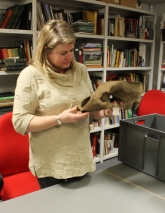
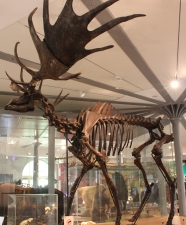
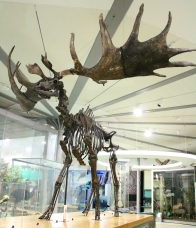
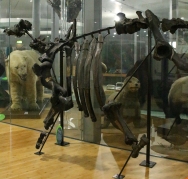
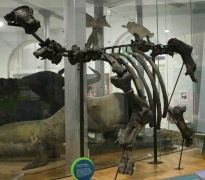
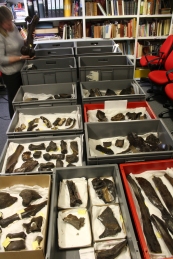

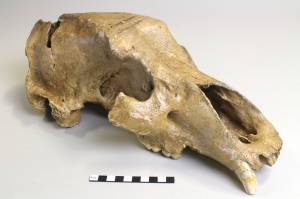

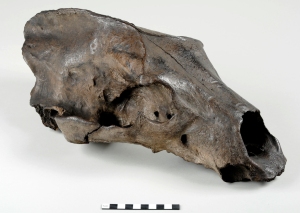

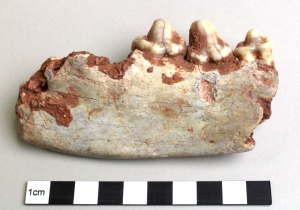
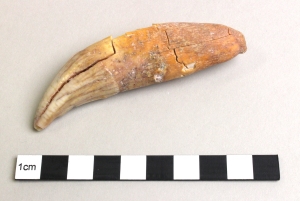

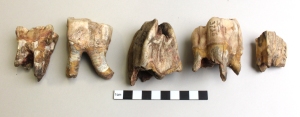
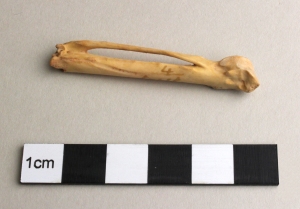
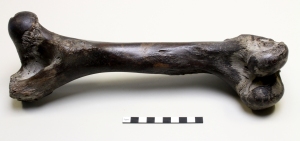
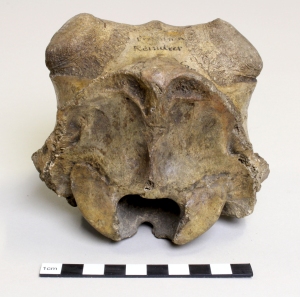

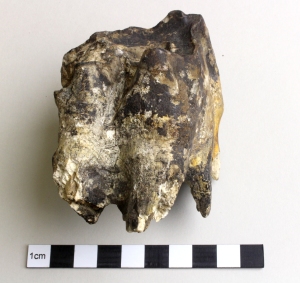
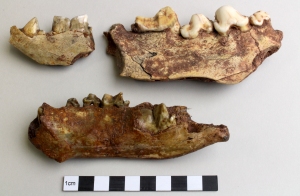
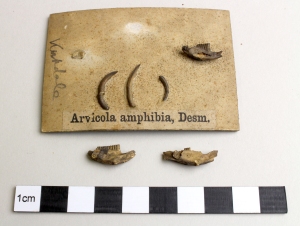
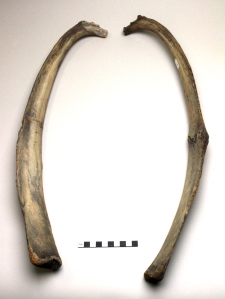

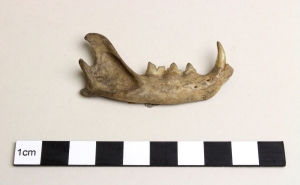
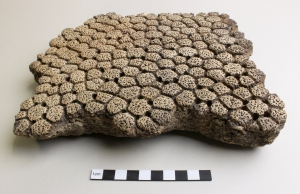
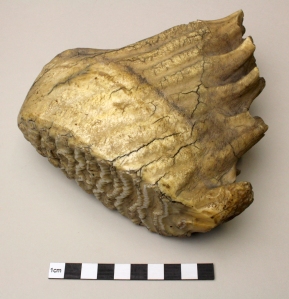
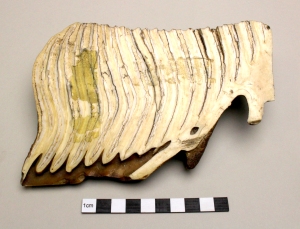

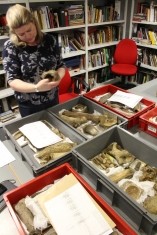
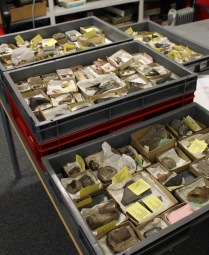
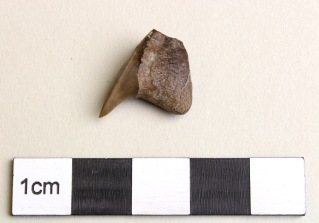

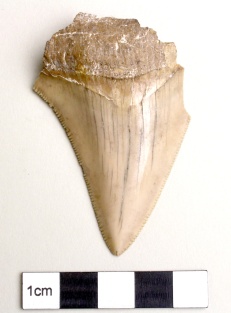


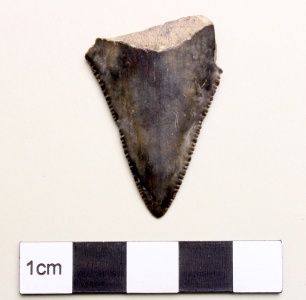
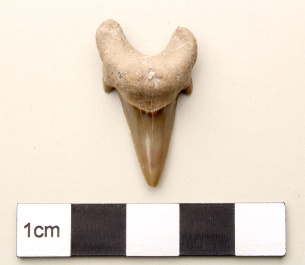

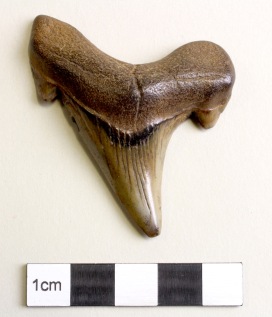
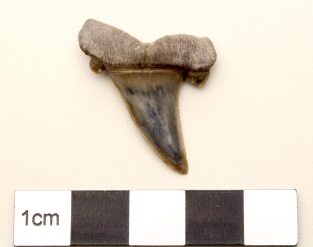
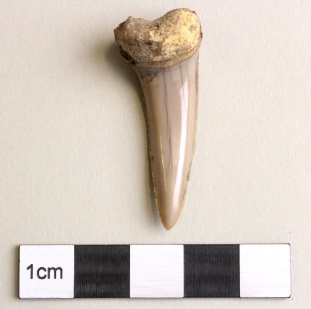
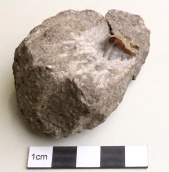
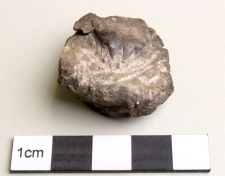
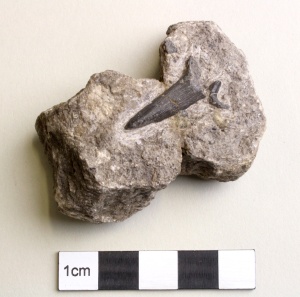
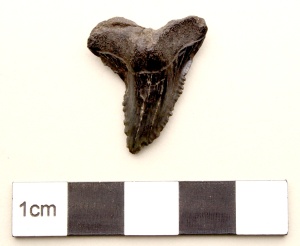
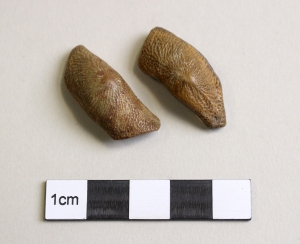
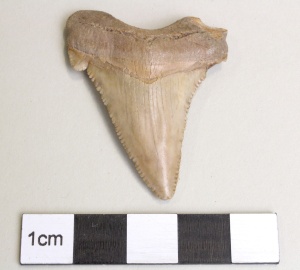
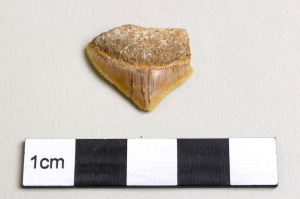
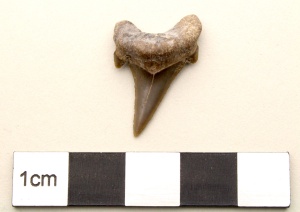
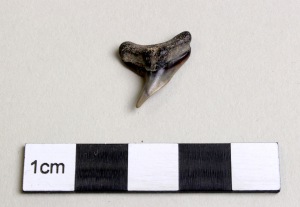
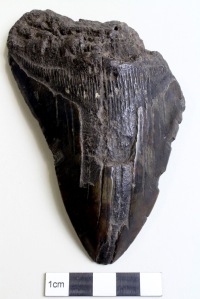
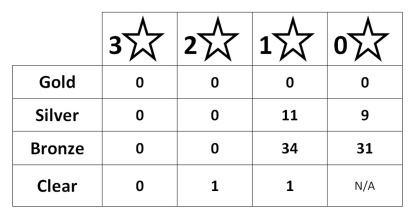
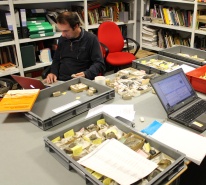
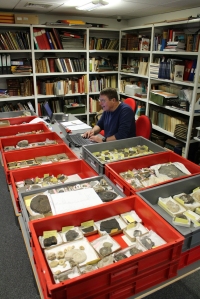
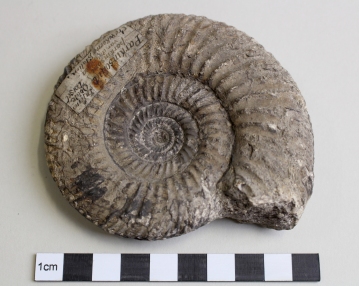

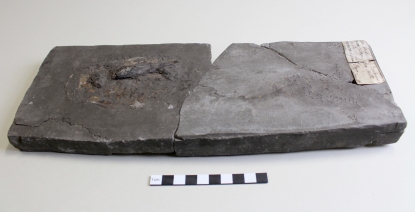


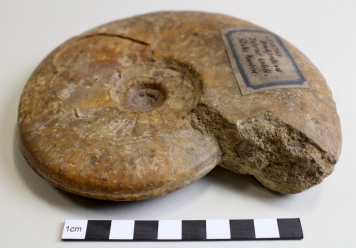
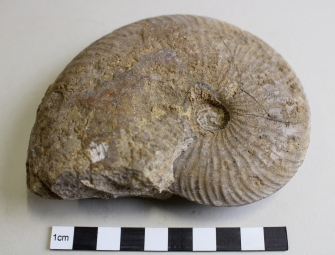
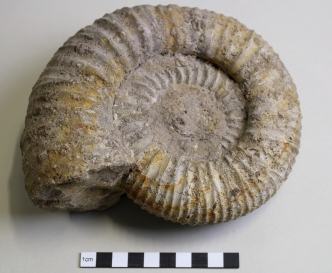
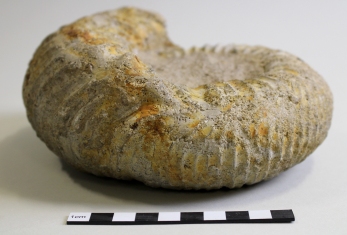

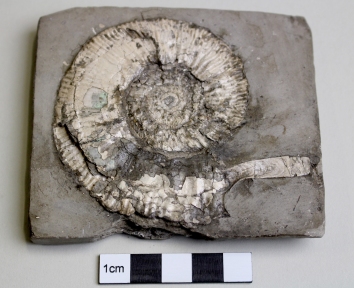
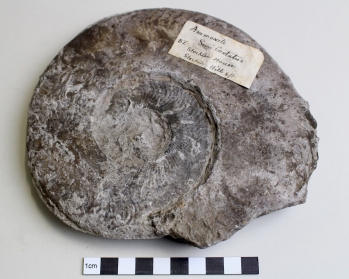
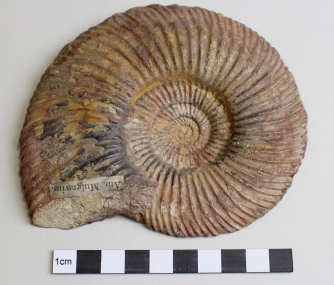
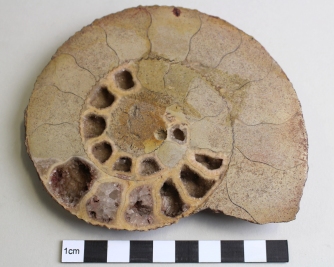
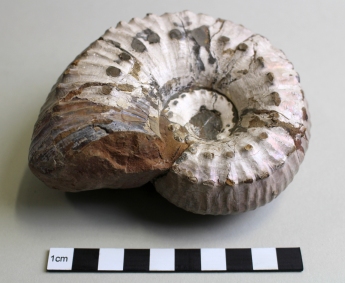
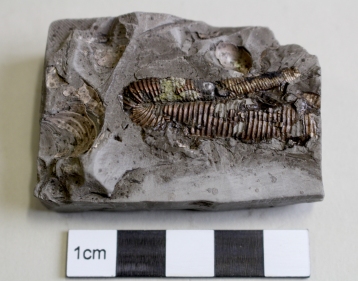
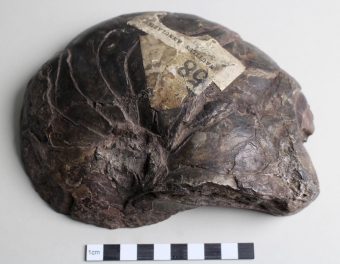

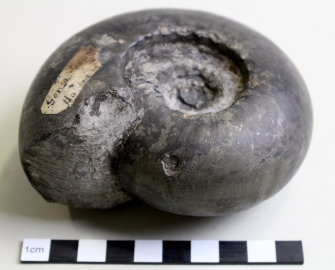
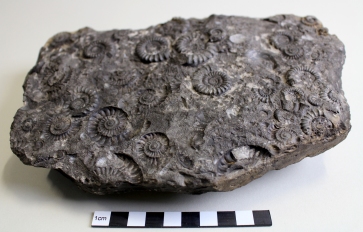
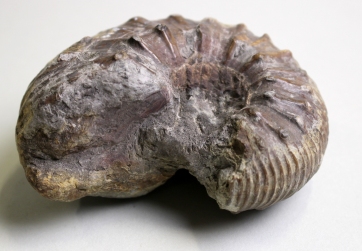
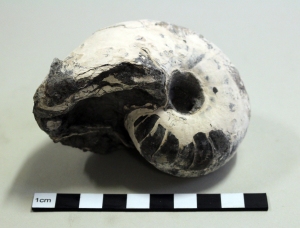
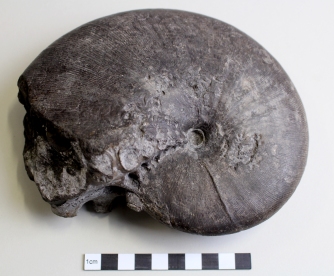
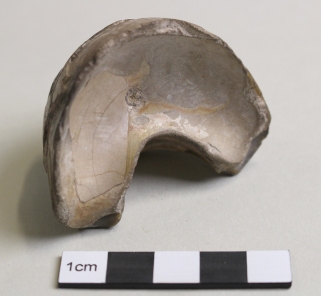
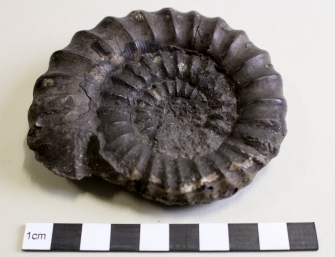
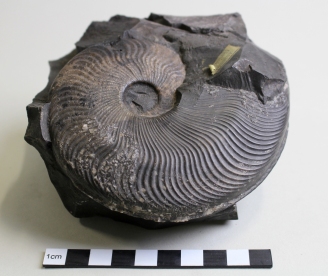
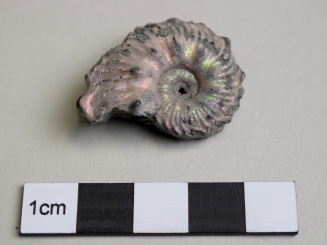
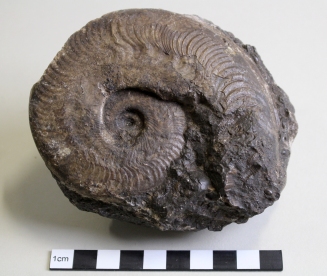
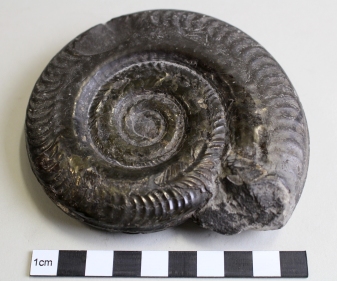
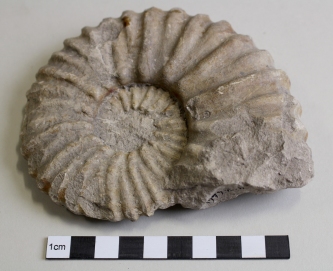
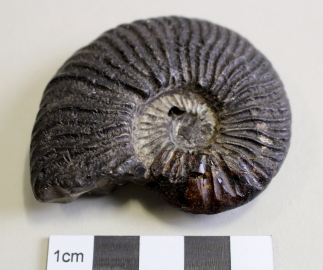
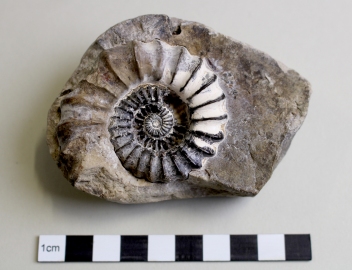
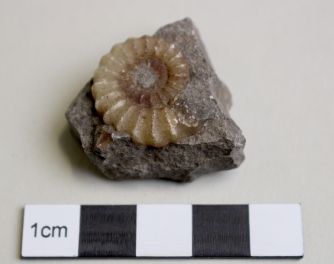
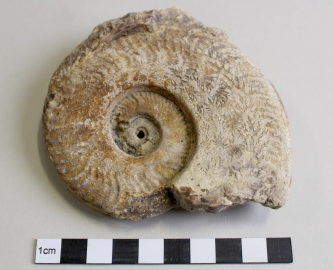
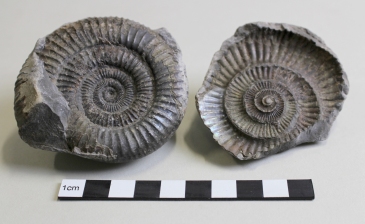
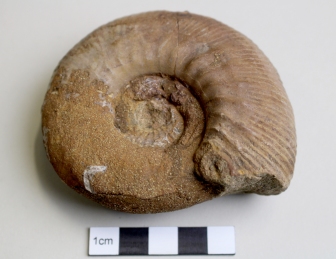
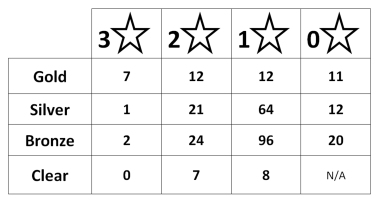

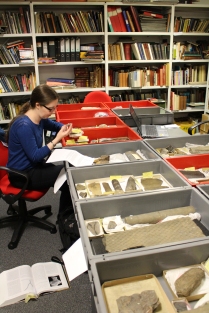
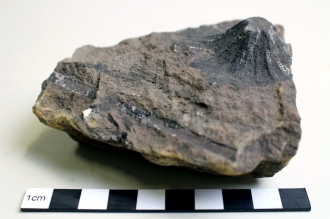
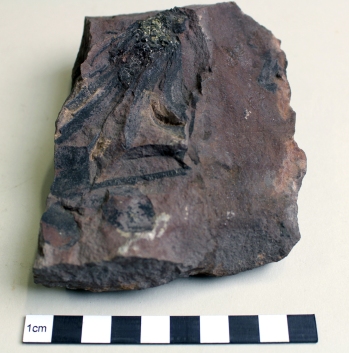
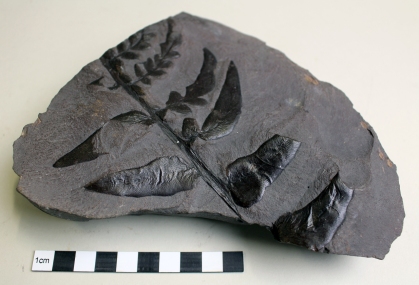

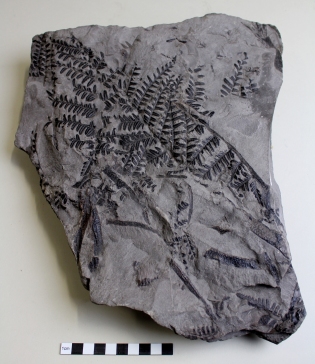
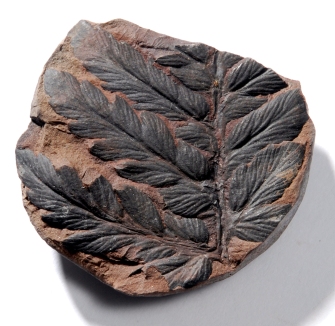
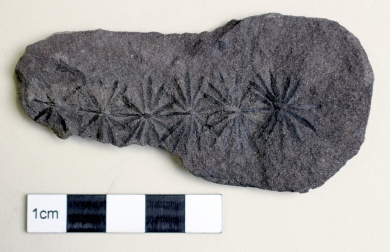
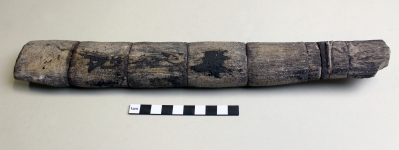
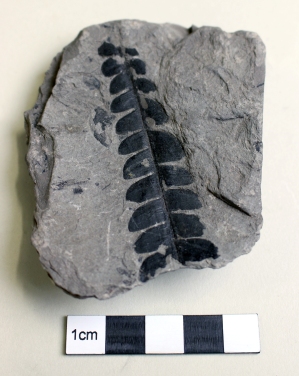
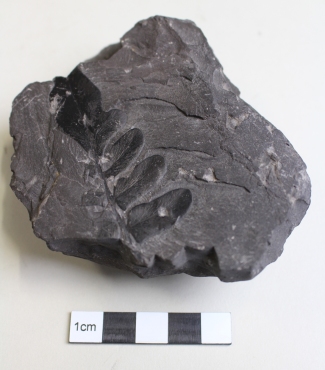

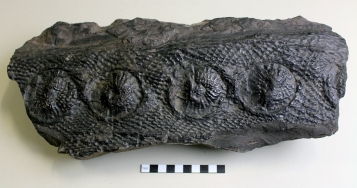
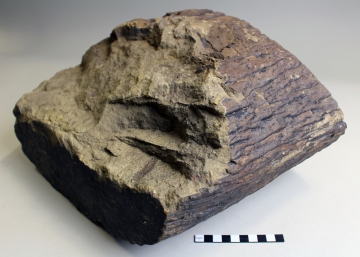
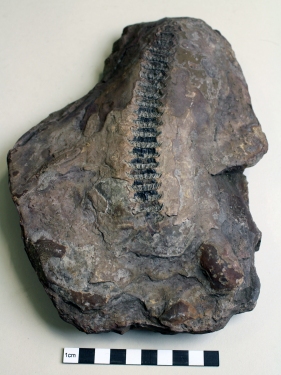
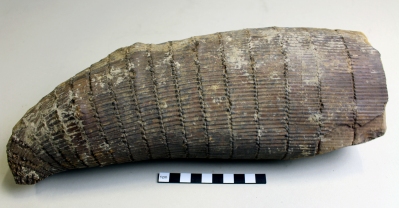
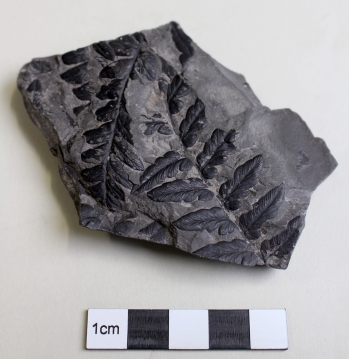
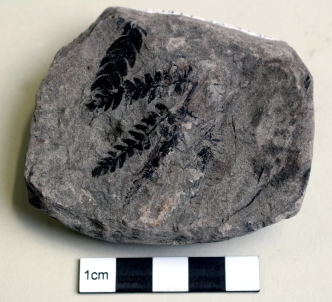
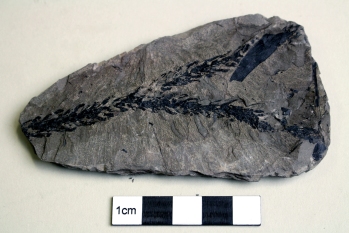
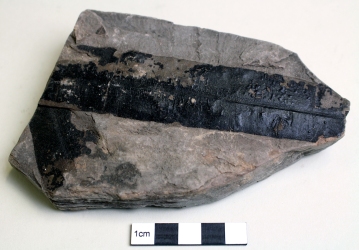


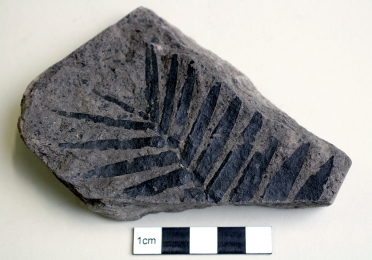
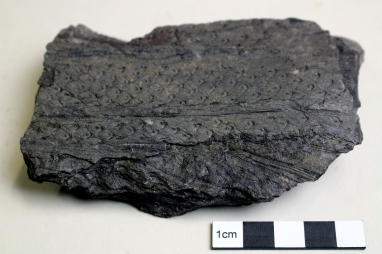
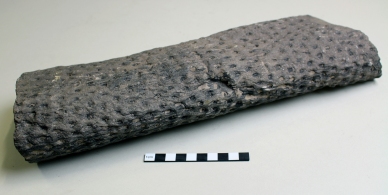

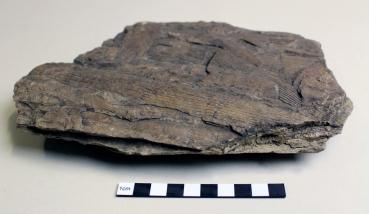
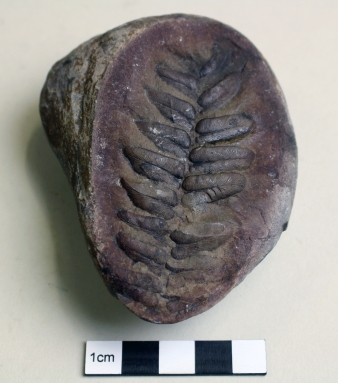
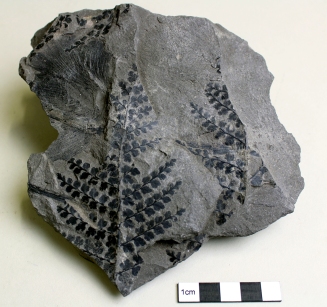
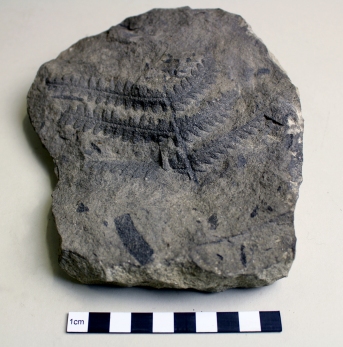
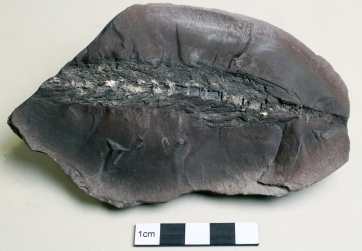
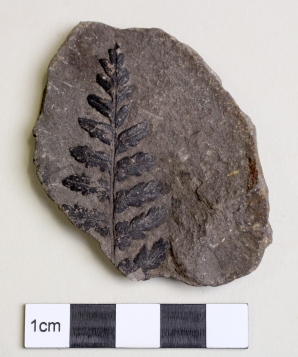


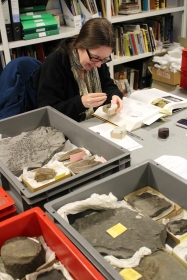
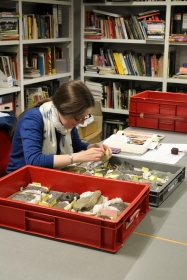
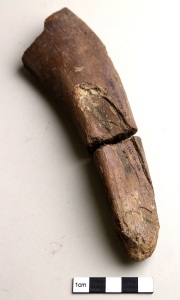
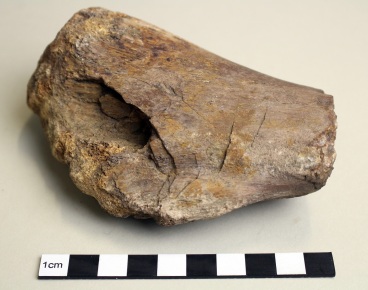
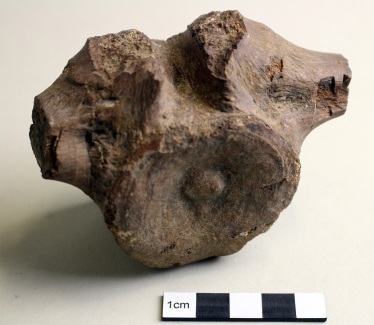



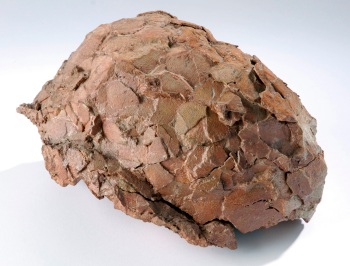
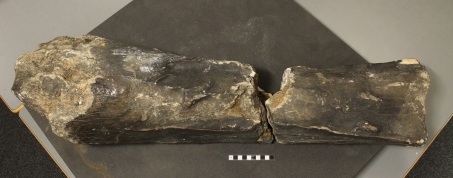
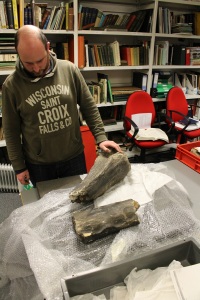

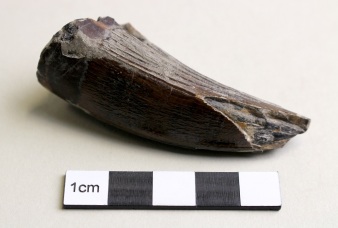
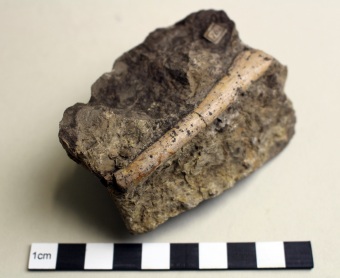


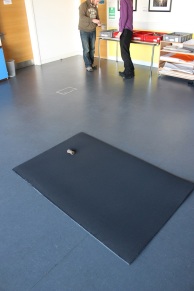

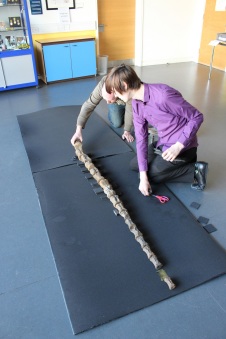
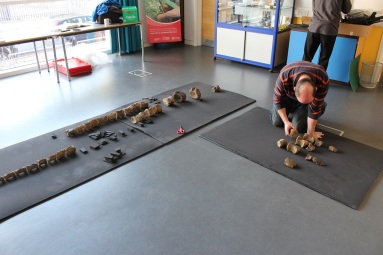
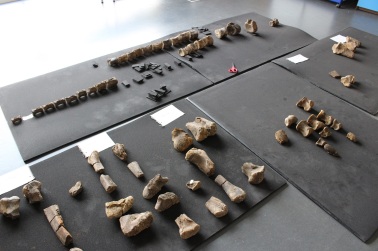
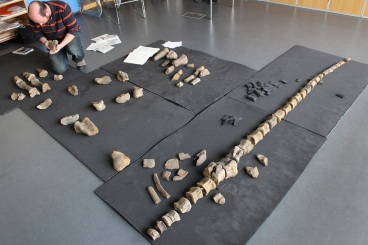
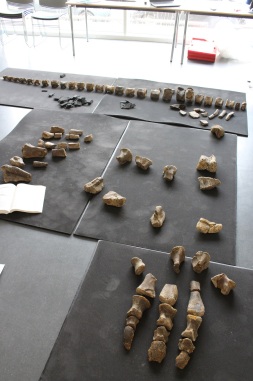
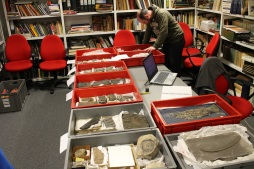
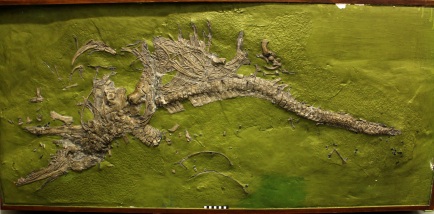
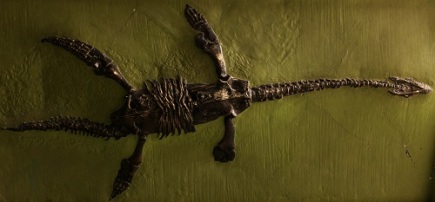
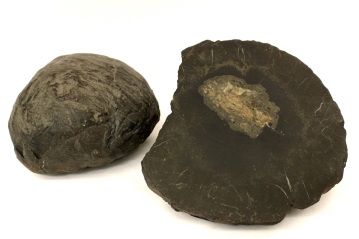

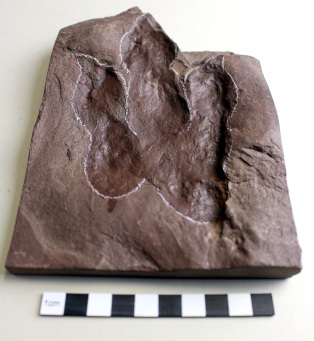
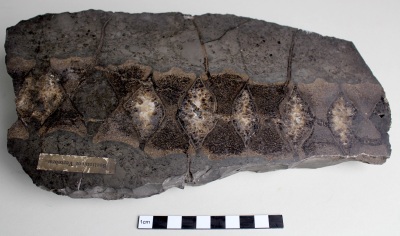
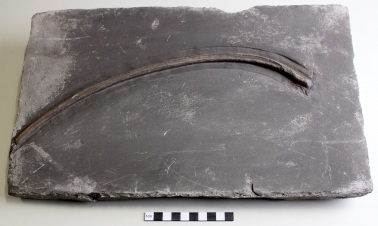
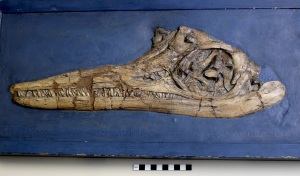
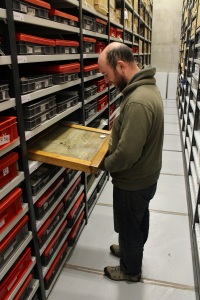


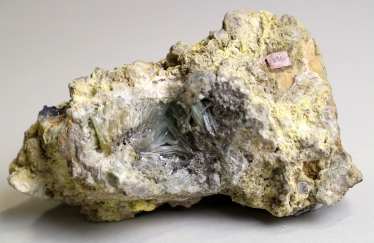
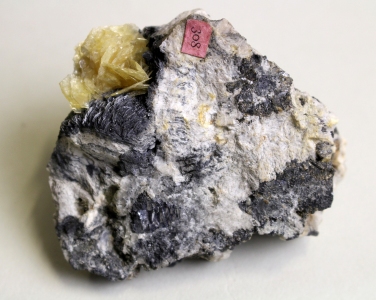

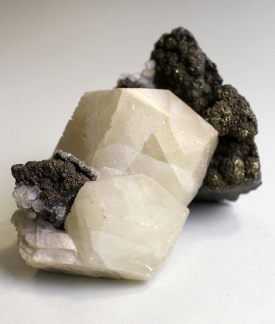
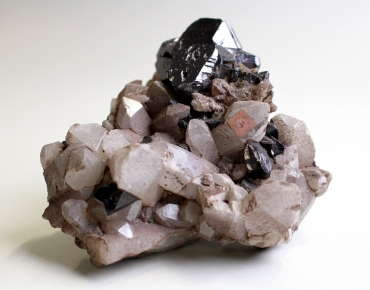

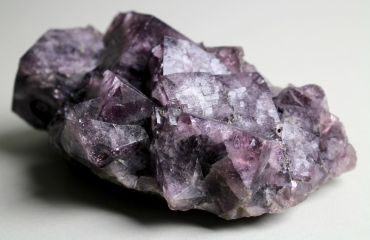
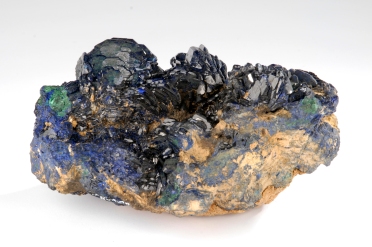
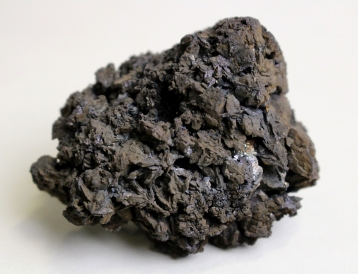
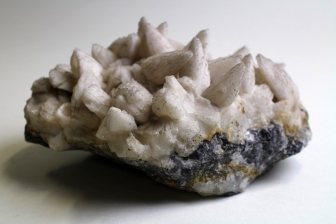
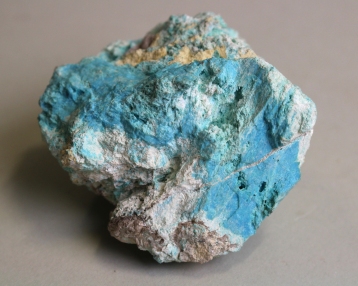
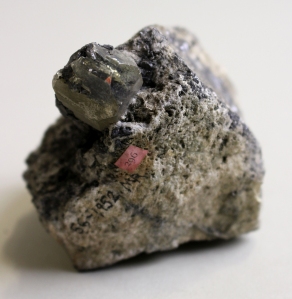
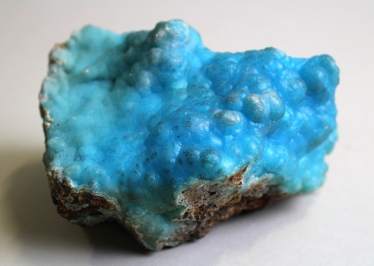
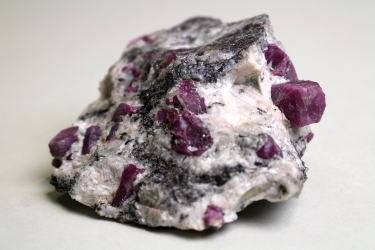

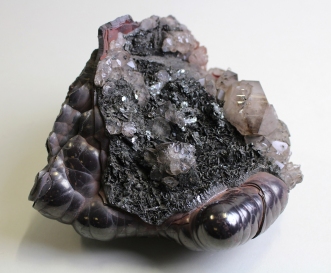

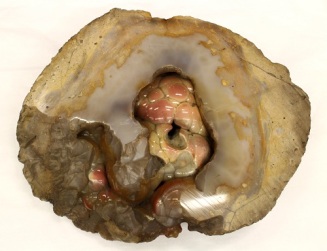
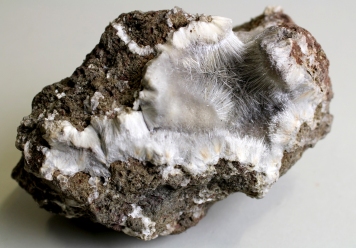
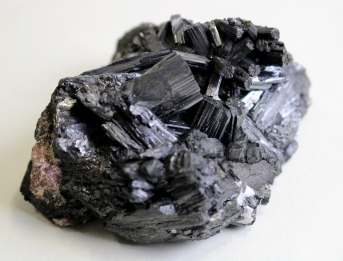
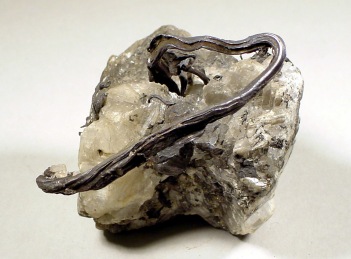

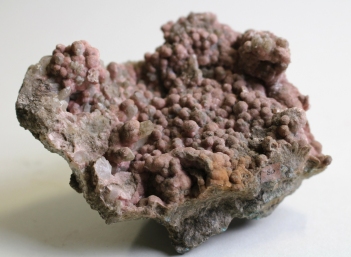
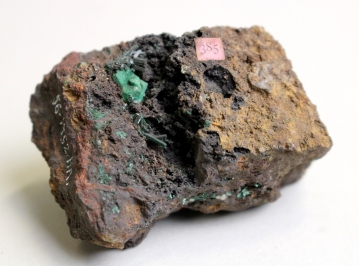

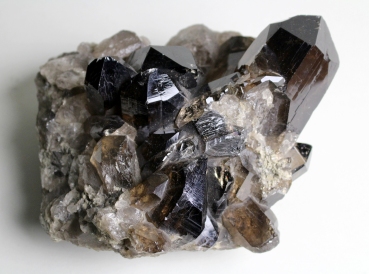
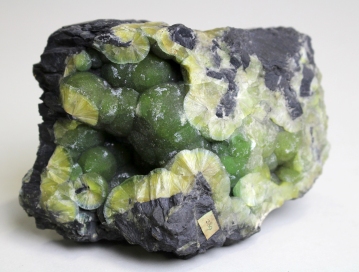
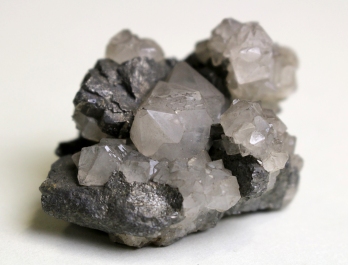


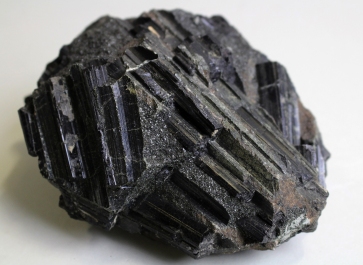
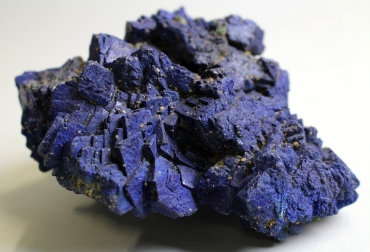
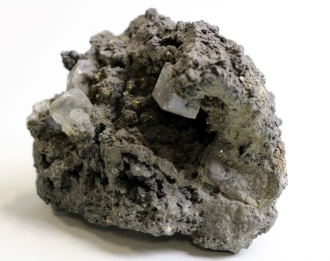
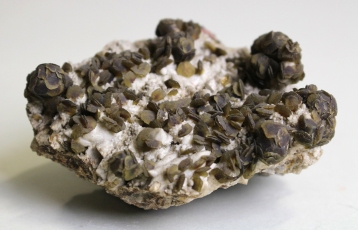
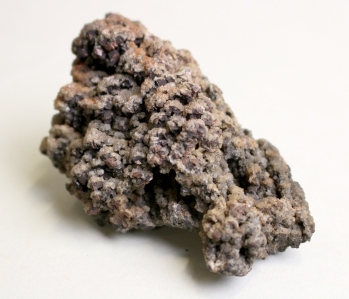
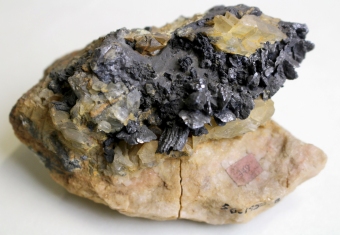
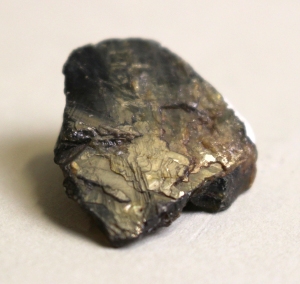
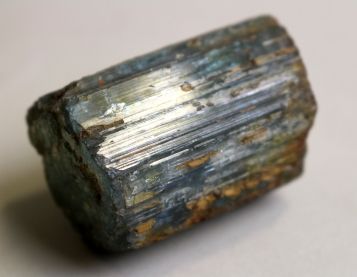

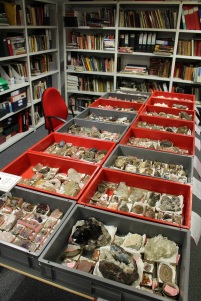
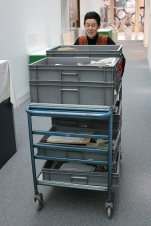
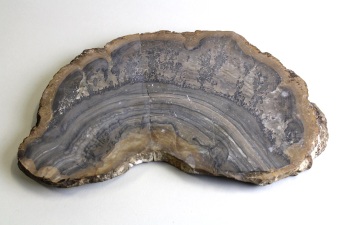
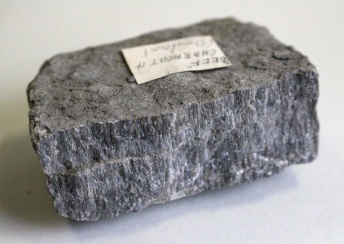

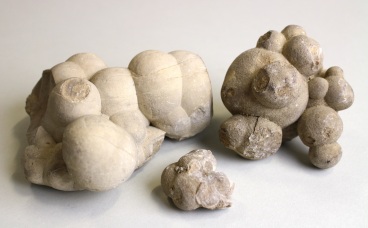
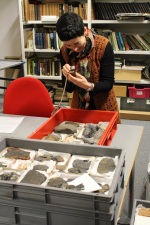
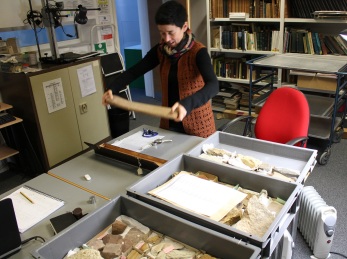

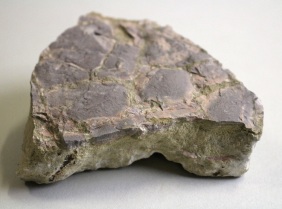
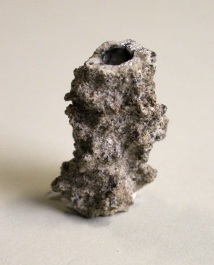
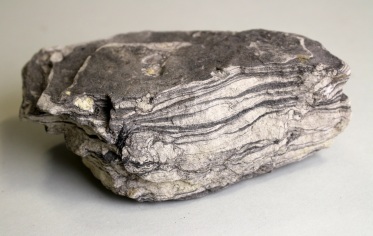
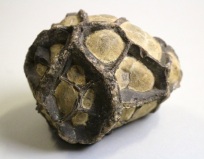
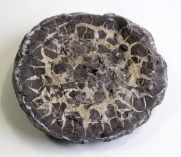

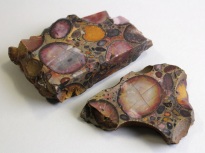

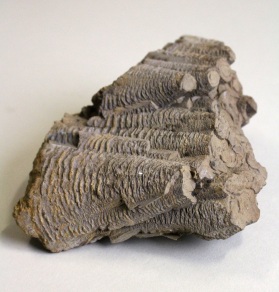

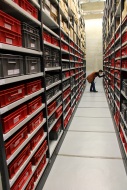
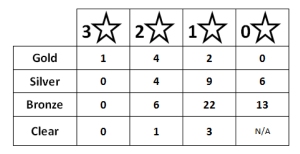
You must be logged in to post a comment.